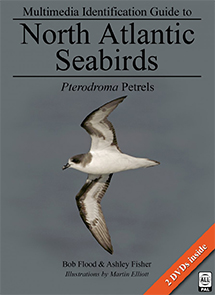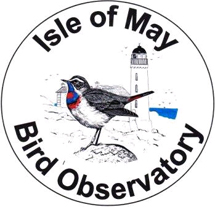Mark Golley's weekly birding round-up: 04 - 10 May 2016
Blue skies, properly warm sunshine, minimal cloud and a big fat dollop of high pressure sat to one side of us (which helped pull in some ultra-migrant, and birder, friendly south to southeast winds) was certainly the story of the weather week for the seven days that have just passed us by.
It was on the cards from 10 days or more ago that conditions would, for many across the country, settle down in to a run of conditions that would really push wide open the that avian passage door that has been sneakily ajar for two or three weeks now.
Southern and eastern Britain in particular benefitted from the weather systems set-up - temperatures rose to the low 20’s (the low 70’s in Fahrenheit) and were aided and abetted by a modest southeast breeze - indeed aside from the odd, unpredictable shower, the first two or three days of the latest review week saw almost the whole country enjoy some sunshine even if, as say on Shetland, the Celsius reading was in low double digits only.
A few ribbons of high cloud gave some respite from the otherwise unbroken sunshine but by the weekend, the long, leading edge of an Iberian low pressure sent a pulse of wet weather towards the western side of Ireland and then the Hebrides.
As new sets of migrants began to appear in number, the sense of expectation and excitement was palpable - being in the field was now a great place to be - and the bird news from the past seven days also brought plenty to muse upon too (though those on the south east coast craved more cloud and some precipitation as the longed for better conditions quickly become too goo - blue skies = high flying birds and no falls).
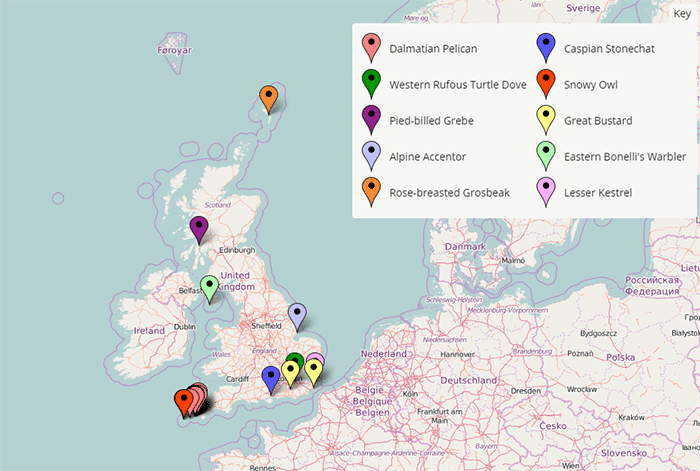
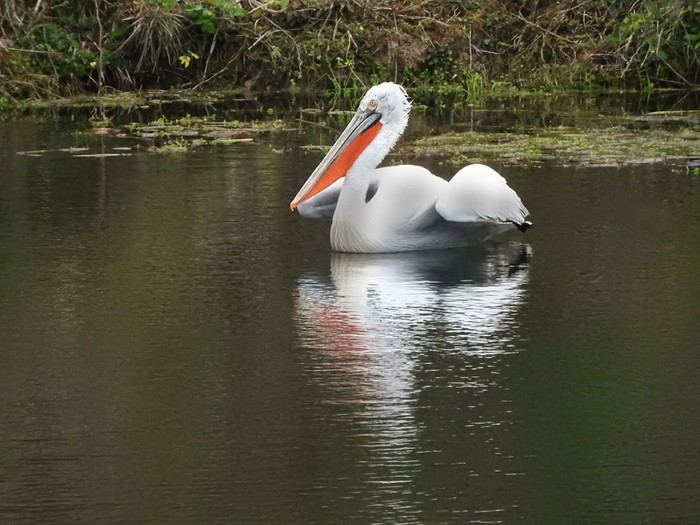
Once upon a time, way back when, in the days when Jack Dorsey, Evan Williams et al., hadn’t even wondered about inventing Twitter, birding was all about fun, entertainment and seeing great birds - with little by way of the rancour and nihilism that is so pervasive now.
So, let’s inject a bit of something positive back in to the proceedings by musing on the potential “1st British record” of the adult Dalmatian Pelican that has been roaming around the far west end of Cornwall since being first noted over Gwithian on 7th (where it was thought to be a White Pelican - a day which saw much hot air being scooped up in huge dollops from (loosely) parts of eastern Europe (albeit not in a cooler and damp west Cornwall).
It didn’t take long, post the news of the “White Pelican”, for the online detectives to quickly threw up the presence of Alfie, a local Pink-backed Pelican at the almost-adjacent Paradise Park - a member of the “Flying Display” team no less, but the sole observer of the Gwithian bird was adamant that it wasn’t a Pink-backed…
Nothing more was heard about the bird during 7th or the 8th either, that was until some late night postings pointed people to photos of the bird from various coastal sites around the expansive tip of west Cornwall - after the initial sighting at Gwithian the bird spent an hour offshore from St. Ives late in the afternoon and then during the following morning it was on the sea at Porth Nanven, before spending half an hour around the seaward end of Cape Cornwall, just after noon. It then spent some 15 minutes or so around Land’s End (just before 2-ish).
The pictures taken showed not a White but a Dalmatian Pelican - and the interest-levels rose rapidly come Monday morning as more bleary-eyed, back-to-workers looked at the images.
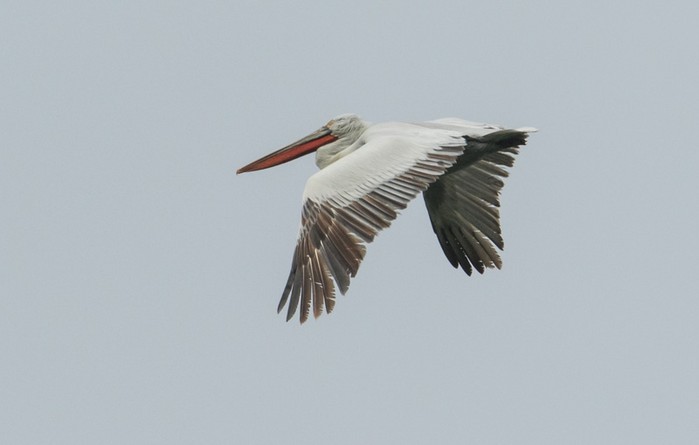
Interest ramped up further still as news that it was still present - sightings coming mainly from the Land’s End area through the morning, even dropping on to the pond at Swingates House for a time as it back-and-forthed between Land’s End and Nanjizal. Around lunchtime, it seemed to settle on the pools at Skewjack as more and more folk headed westwards. It remained flighty throughout the afternoon, keeping tensions for the travellers high, and was last seen just after 6.30pm heading back towards Land’s End from Brew Pool.
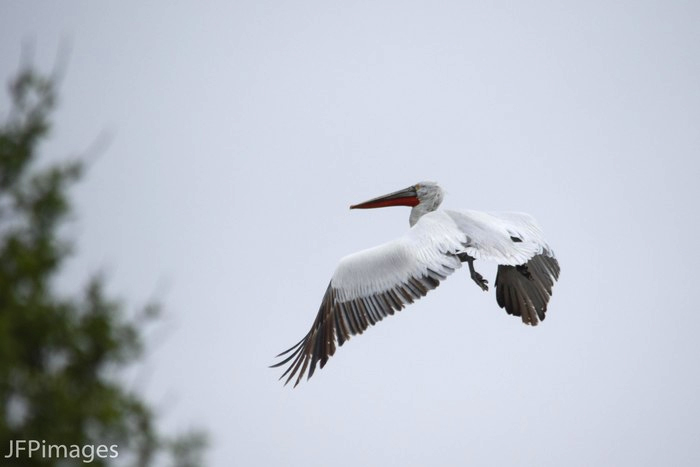
For those arriving too late on 9th, a sweaty-palmed wait on 10th brought nothing until just before 10am, a report citing that the bird had been seen near Marazion Marsh RSPB. That may have been a false start and it wasn’t until 11.30am that it was back over Land’s End and a similar scenario to that of 9th was played out once more.
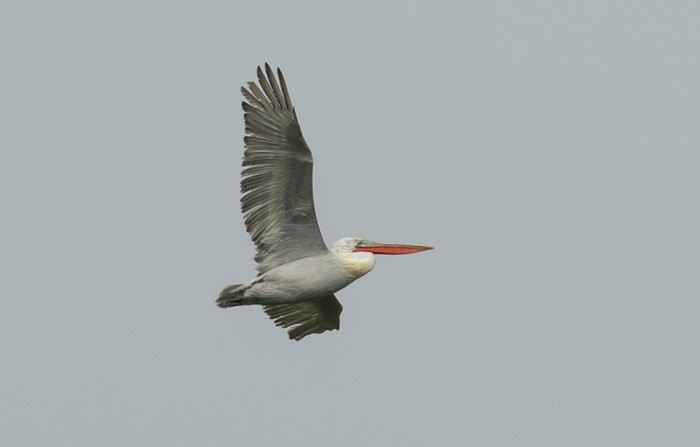
European Dalmatian Pelicans are generally regarded as relatively short distance migrants but vagrancy has been recorded (and accepted) from (for example) Cyprus, Italy, Germany, Latvia, Poland, Slovakia and Spain, even through to Norway. Could Britain now be added to that list? It looks highly likely…
In his privately published, brilliantly exhaustive ”Rare Birds In Britain; 1800-1990”, Lee Evans mentioned three British records; two were known escapes, the first was seen in west Cornwall, around Marazion in April and May 1951 and that bird was known to have escaped from a collection in the Netherlands in February of the same year (sound familiar?).
The second record, also thought to be an escape (this time from Colchester Zoo) was noted from late October to early November 1967 in Essex, before heading through Kent, Sussex, Hampshire, the Isle of Wight, Dorset and Cornwall to the end of the year, reappearing on St. Agnes in January ’68 (a wide-roaming pattern matched by the White Pelican that was tracked around the country after making landfall along the Norfolk coast on August 16th 2006).
The third and final record, of a bird of unknown origin, was a November bird in Cheshire in 1974, seen for around half an hour at Elton Hall Flash, Sandbach. Since then, nothing…until now.
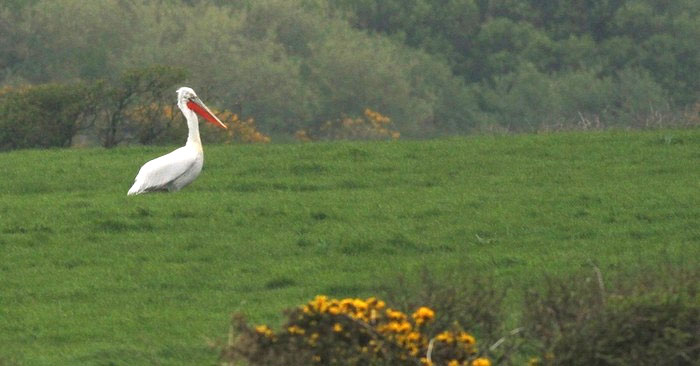
As the Dalmatian Pelican news filtered through and sunk in, confusion cropped up as to whether or not the Cornish bird was one-in-the-same as one seen in Poland in April. At first it seemed to be the case, then it wasn’t, and then it was again (and this one had travelled through Germany and eastern France, where it was noted on May 3rd) - arguably it doesn’t matter as the main concern is just how many captive continental birds there are (and as 10th drew to close significant information from Germany suggested all may not be well with this Euor-traveller).
Those online sleuths, replete with deer-stalkers, lollipops and crumpled macs (take your pick as to which detective you fancy) quickly established that 22 (yes, 22…) countries around Europe currently hold captive Dalmatian Pelicans and while that shouldn’t detract from the excitement surrounding this potential British first, it is a sobering reminder of just how much work lies ahead for the BOURC when this file gets to them.
…and even if it was a bird that started out in Poland, does that mean anything to the good?
Those who saw that aforementioned White Pelican along the Norfolk coast on August ’06 will quickly tell you that it too was another bird that arrived in hot weather and that it had come via Schleswig-Holstein, Germany and then the Netherlands, seen on Texel, - the Dutch Rarities Committee accepting it to Category A at the time.
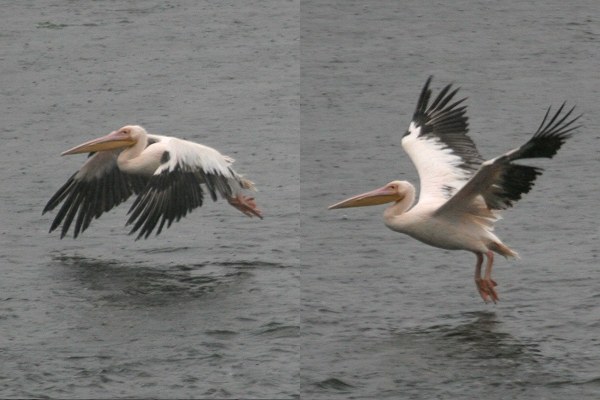
Two days later it was in Lancashire and then things went haywire - firstly, it was on the tame side and then a grand tour of the country commenced (and it was clear that a second bird was in the mix somewhere too), seen from Essex to Moray over the course of the next two months before (one of them) heading back in Lancashire in October. It ended with almost all parties concurring that this was a duffer…
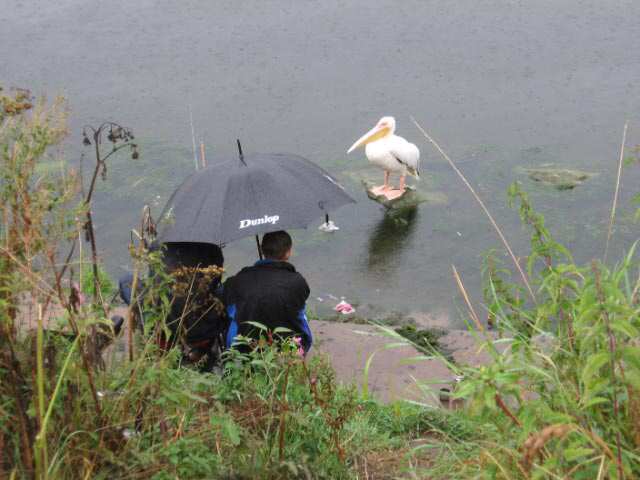
A little like the recent (and once again, now current, Demoiselle Crane - there maybe an occasion when one is actually the real deal; the Cumbrian (now Durham) Crane isn’t one of them, and neither (sadly) was that 2006 Pelican.
More information is awaited, with a great deal of interest, as to where the Dalmatian Pelican may have come from - a zoo’s collection or the Danube Delta. The German news from 10th is the one to keep an eye on as it may hold the nails for the Pelican-shaped coffin.
…BUT, well, with the weather we’ve had and some of the other weirdness that’s been going on - I’d be somewhat fidgety (trying hard to ignore the numbers in captivity) and hoping upon hope that maybe there was something in this one… just in case…and y’know what, why not?!?
This is May after all.
…and this bad boy is an absolute gem of a early-mid May bird, so much so that it was rattled in as my big-shot prediction for next week. In a week where endless paragraphs have been removed from the end as the weather just went RARE the last few hours of 10th seemed to have let me off the hook as the jingle-jangle nerves eased a tad.
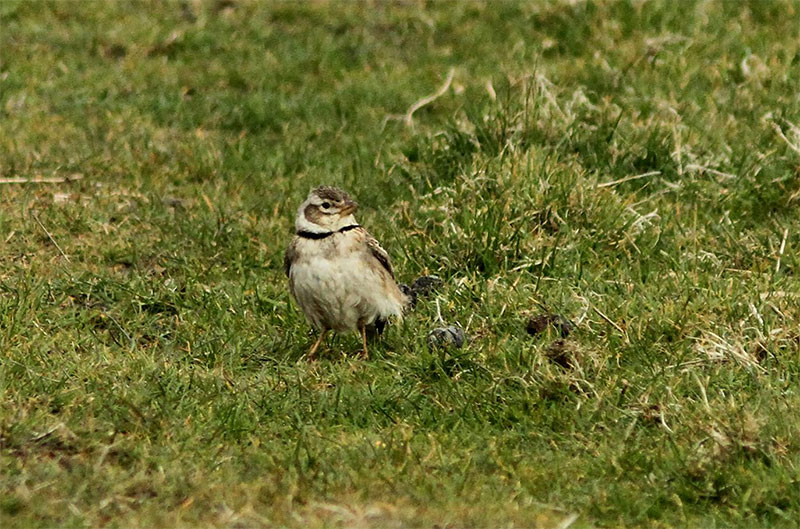
Then the later afternoon bought a beep on the pager and a buzz on the phone - there was another mega alert - I’d have staked my entire monster collection of rare Neil Young vinyl, cd’s, bootlegs, artwork and memorabilia that I’d see Calandra Lark when I opened up the message - and given that Norfolk was so utterly pants and knowing the previous form and the weather “up north” it was only ever going to be on Fair Isle.
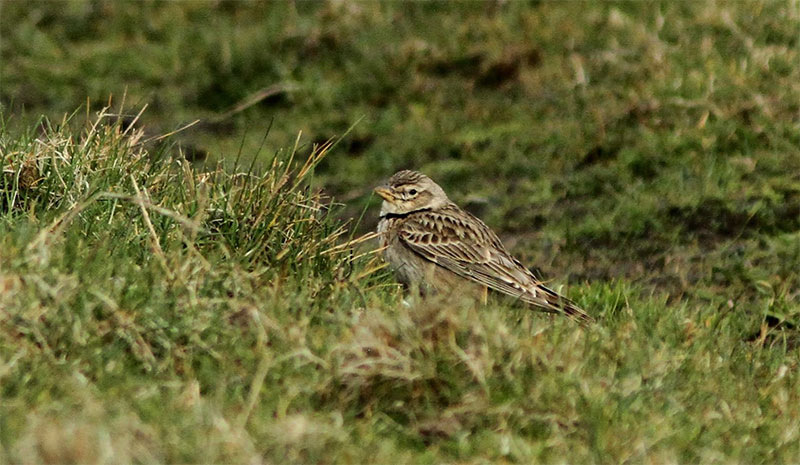
Correct on all points.
Here’s what was scribed, now cut & pasted for the end of this week’s novella…
…”while this is right in the time when you could expect to see the words Calandra Lark loom large on the pager - a third of all 18 records have been found between the seven days ahead, with two of Fair Isle’s five arriving in the time frame (and there’s been one on Unst too) - while the much twitched bird on the Isle of May was found on May 12th 2006.

So, the bird that well and truly scuppered me was found on the Utra scrape, on Fair Isle, late in the afternoon of 10th. It becomes Fair Isle’s sixth in all (and Shetland’s seventh), the fourth for Fair Isle in May and there have now been 11 May records in all, from an overall total of 19.
Seven have been seen in the past 10 years now but the species remains desperately hard to twitch - if it wasn’t the Scilly bird of ’84 or the Isle of Man bird of ’97 then your only real option was the superb bird, mentioned above, that was on the Isle of May for six days in 2006.
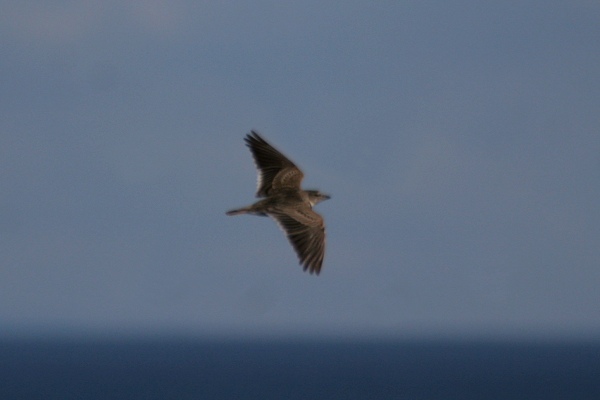
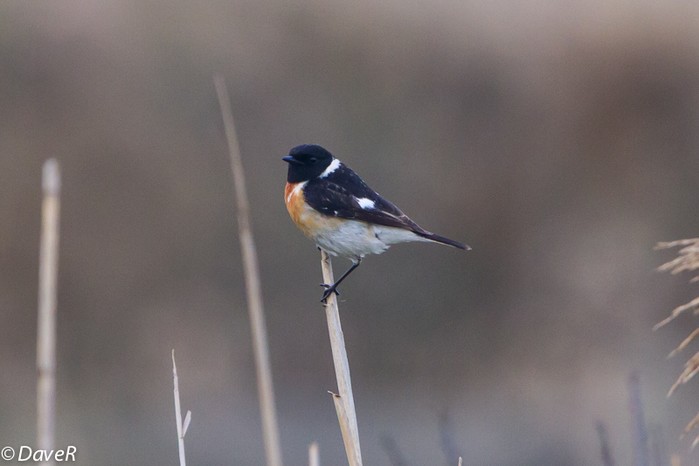
Sneaking in late in the day, at last knockings of the week, was a distinctive form that had seen Fair Isle claim the most recent record (in the spring of 2014) - here was a fine looking first-summer male Caspian Stonechat (of the form variegatus or hemprichii) and it was found at Titchfield Haven NNR (Hampshire) on 10th.
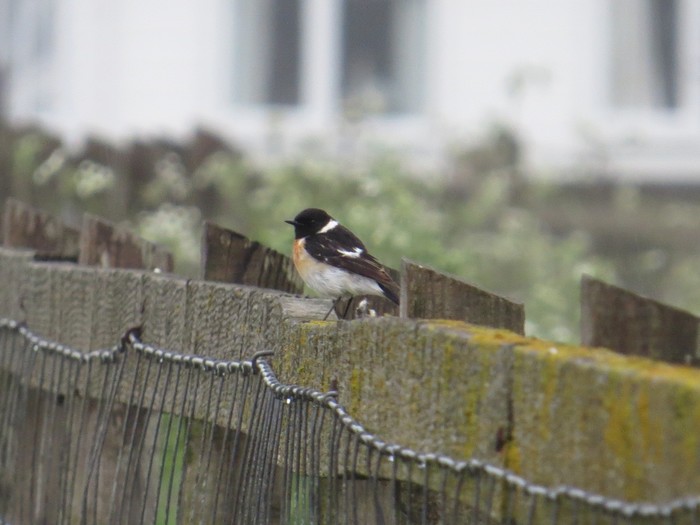
This was a slow burner through the afternoon (it was present from early morning and suspected to be something decent), slipping by almost unnoticed amongst a throng of Pelican sightings and then Lark news.
Initially listed as a potential first-summer male Siberian Stonechat (which, in the strictest sense, it still is of course…) this striking male appeared to be a rather showy thing - and full credit for pursuing it go to finder Amy Robjohn, who’s landed the third mainland male and, if still present by the time you’ve read this, the first twitchable mainland record.
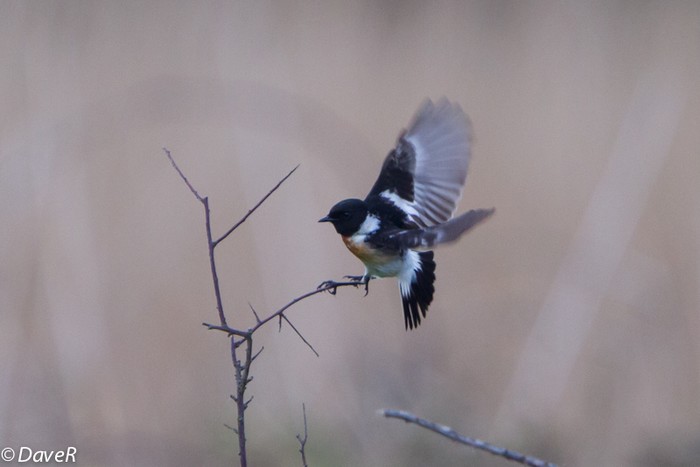
In contemporary terms, this distinctive split-in-waiting (oh, we ain’t got no TSC anymore…) has become much more recognised (in both senses) thanks to the spring male at Pool of Virkie during the first week of May 2006, the first-winter male that popped up on St. Agnes (Scilly) at the tail end of autumn 2013 and that stunning late April arrival on Fair Isle in 2014.
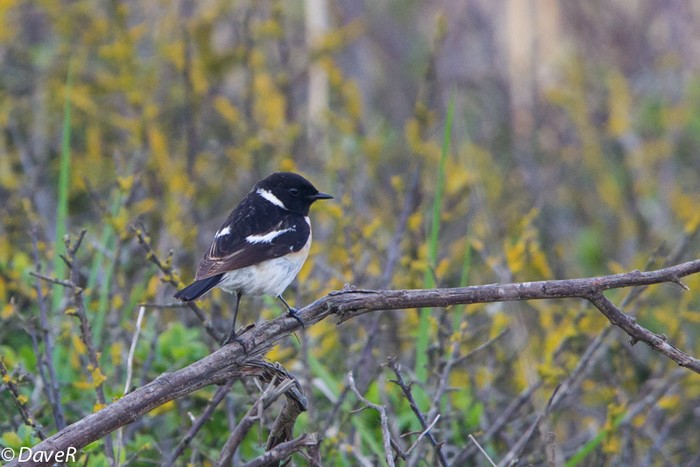
These three followed on from an autumn male, in Suffolk in September 1993 and Britain’s first, the bobby-dazzler at Porthgwarra in October 1985.
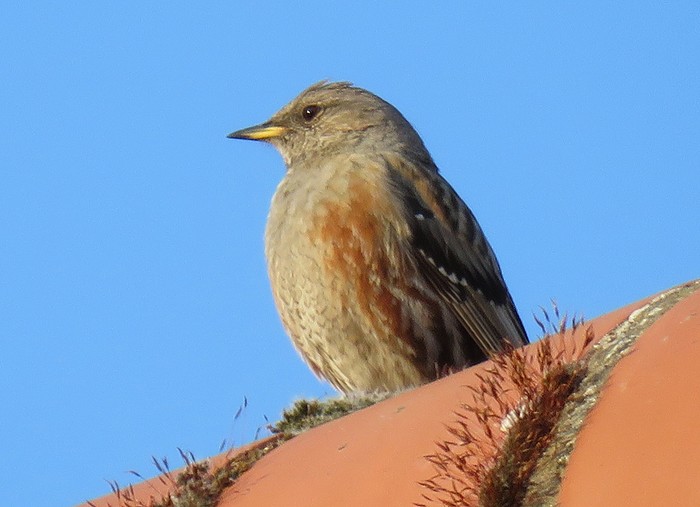
Hot on the heels of the belated news of the second Alpine Accentor of the spring - seen in north Norfolk on the same day as one in Hampshire - and even hotter on the heels of news of a fresh arrival on the small Dutch island of Vlieland (on 5th), the warmest day of the year so far got warmer still for that new generation of birder who still “need” this AA grade rare…
This week’s bird, with news distributed within just a few minutes of discovery, was found at the feeding station around Sykes’ Farm, at Gibraltar Point NNR (Lincolnshire) in the late afternoon of 7th.
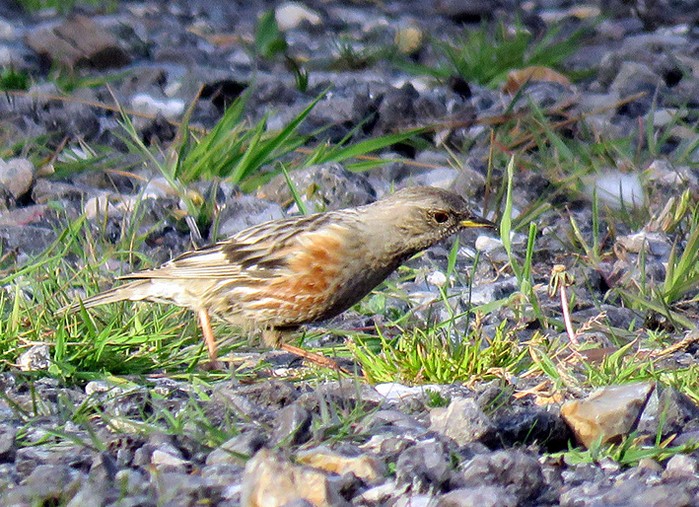
For those within striking distance of this cracking south Lincolnshire site, the Alpine Accentor showed throughout the evening - only the second record for the county, the first being well twitched at Rimac, near Saltfleetby between November 14th-18th 1994.
This year’s three records take our overall total to 37 birds in all, and there have been seven previous May examples of this premium oddity. The first three of those eight were seen in Kent (in 1932, 1975 and 1976) and they were followed by the mass-twitch to the Needles, on the Isle of Wight at the end of May 1990. Others followed on Lundy in 1993, Kent’s fourth May bird was seen in 2000 and another followed soon afterwards in Suffolk.
A quick look at the map makes for interesting viewing and the “muse factor” is high - could the Vlieland bird actually be the Gib Point bird? There’ve been plenty of vagrants around on the European continent this spring but the two sites are (almost) in a straight line across the North Sea from each other (the Lincolnshire site is just a few degrees south of directly west from the Dutch site).
Either way, it was a stunning chance for those with a hole in their lists…but the morning dawned with a distinctly empty feel to the area - that was that.
Game over.
Well it didn’t take long for a second bite at the Bonelli’s cherry (as it were).
Little more than a fortnight on from the strange bird in the Cornish valleys (with biometrics loosely pointing one way, mtDNA the exact opposite) then along comes news of a calling, trapped and ringed Eastern Bonelli’s Warbler on the Calf of Man.
News of the bird emerged during the afternoon of 6th - the bird itself had been present on the Calf (the little islet off the southwestern tip of the main Isle) the previous day and to some time in the morning of 6th as well, but had been, by all accounts, elusive throughout.
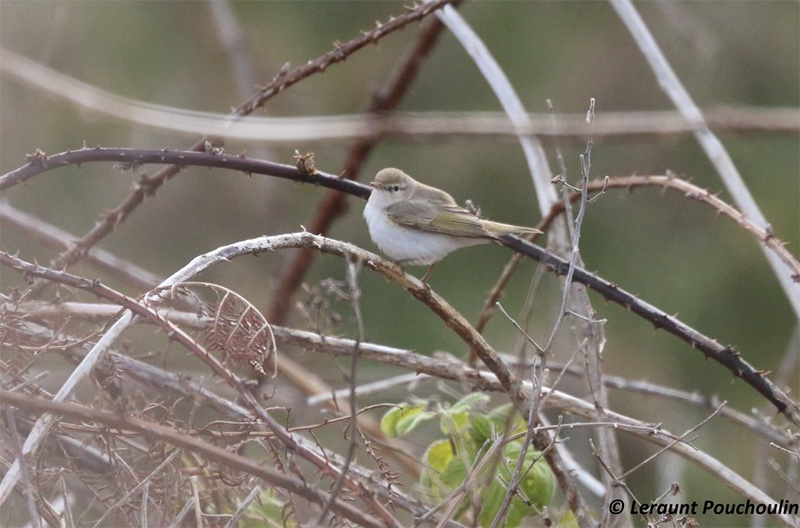
As was mentioned a fortnight ago, to date, there have been just seven acceptances of this tricky species and this week’s Calf of Man individual will, if given the green light, become not only Britain’s eighth Eastern Bonelli’s Warbler, a first for anywhere in the northwest region and the fourth in spring in all.
Those other spring records appeared on Lundy Island April 2004 and that was followed by two further early May birds, the singing male at Portland, on May Day 2009 and a calling bird in the northeast, at Newbiggin-by-the-Sea in on May 3rd 2014.
With no reason to doubt the news from the Calf of Man this week, a new slender window of opportunity has been created for orientalis now - three birds found within a six day period at the start of May is quite something, expand it to include the last week of April (the Lundy bird was seen on 26th of the month) and the stats., become more impressive still.
That pulse of warn weather that came along and kicked off the new week with quite some poke quickly provided a little bit of news to get the brain in to gear - an adult male Lesser Kestrel reported briefly at Pegwell Bay (Kent) during the late morning of 4th quickly departing to the west (with no subsequent sightings afterwards).
That’s about as much as most people know about this particular record so we’re swiftly in to the facts of the matter; should this sighting be submitted and then accepted by the Rarities Committee, it will become just the 21st record of the species for Britain and Ireland and it is also a potential 3rd record for Kent (the others being an ancient record near Dover in May 1877 and a freshly dead bird in Dover itself on April 20th 1989.
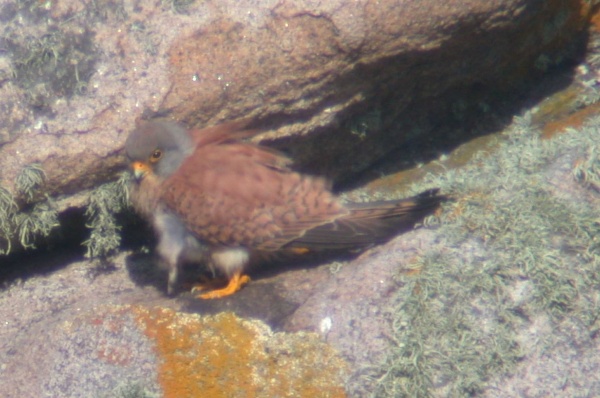
That old first record for Kent (and Britain) is one of 10 Lesser Kestrel records dating between 1877 and 1926; 42 years would pass until the next one arrived, a first-summer male seen at St. Ives (Cornwall) at the end of May 1968. The next one found was the first twitched bird, seen at Rainham Marshes, on the edge of London for four days in the summer of 1974 but almost everyone had to wait until the first-summer male found on St. Mary’s (Scilly) on May 13th 2002 for their first chance to ink in the Lesser Kessie box.
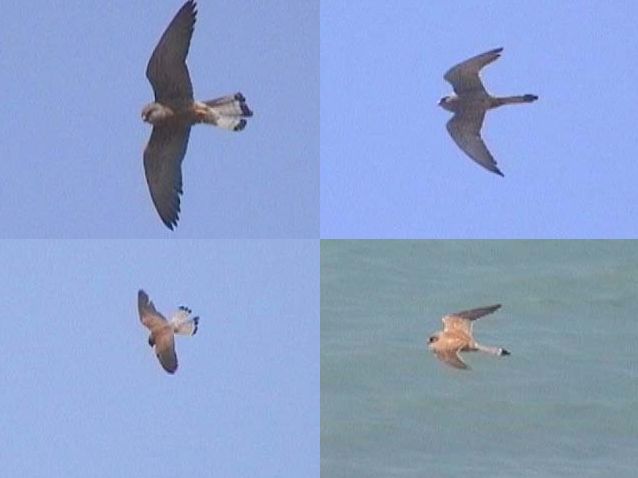
The St. Mary’s male stayed around the island for a total of nine days and eight years later it was followed by another twitchable bird - found on the remarkable date of March 28th - at Minsmere RSPB (Suffolk) in the spring of 2010. Two more have followed, on Orkney, on North Ronaldsay, in September 2011 and at Hope’s Nose (Devon) on the late date of October 28th 2013.
…while we’re in Kent and still on May 4th, there was fascinating news of an “in-off” Great Bustard at Samphire Hoe CP, near Dover too. Seen flying in over the sea and off over the cliffs, there’s a chance (who knows how good a chance…) that this may have been a genuine overshoot from Continental Europe.
Further along the south coast, birders in (say) Dorset are used to birds from the Salisbury Plain re-introduction scheme taking to the air in their county (Portland has had them “in-off” too) so there’s absolutely ever need to exercise due caution where this week’s Great Bustard is concerned. Chances are it too was from the Salisbury Plain programme but there is the possibility that it may have come rather more miles than first thought.
There have been no accepted records of this much sought-after species since the harsh winter of 1987, Kent’s most recent “ok” birds were seen in December 1981 while from the 72 acceptances on the books, only three have been from May (in Dorset in 1888, on Shetland in 1936 and in Gloucestershire in 1977).
Could the sting in the tail here be the news of a Danish vagrant over Anholt on 8th…oooh, errr….
Pied-billed Grebe doesn’t command the kudos that it once did a generation or so ago but that’s not to say that a new arrival shouldn’t be greeted with some degree of fanfare - despite 70 records on the books (there are several duplicates involved, so the number of individuals is markedly lower) it is still a rarity of the highest order so congratulations to the finders of this week’s arrival in Argyll & Bute.
First noted on 6th, the bird was still in place the following day and on to 9th - and the likelihood is that this is actually the same individual that spent eight days at the very same site, Loch Feorlin, near Minard (some eight miles from Lochgilphead) in late May and early June 2014.
That bird was thought to have been the Pied-billed Grebe that had wintered on North Uist (from December 2013 to April 2014) and which appeared the day after departing the Hebrides in Clyde where it remained until the end of April 2014.
The first record for Argyll came in June 1998, near Tobermory on Mull with the second, also on Mull for just over a fortnight in late March and early April 2011 with the Loch Feorlin bird of 2014 becoming number three.
This often elusive species has been recorded annually since 2010 (after a seven year gap in records) and last year saw a popular, well twitched bird make its first appearance in Gloucestershire, at Berkeley on April 24th before alighting the very next day at Lancashire’s Leighton Moss RSPB reserve where it stayed until May 4th. I wonder if it then went to Argyll?
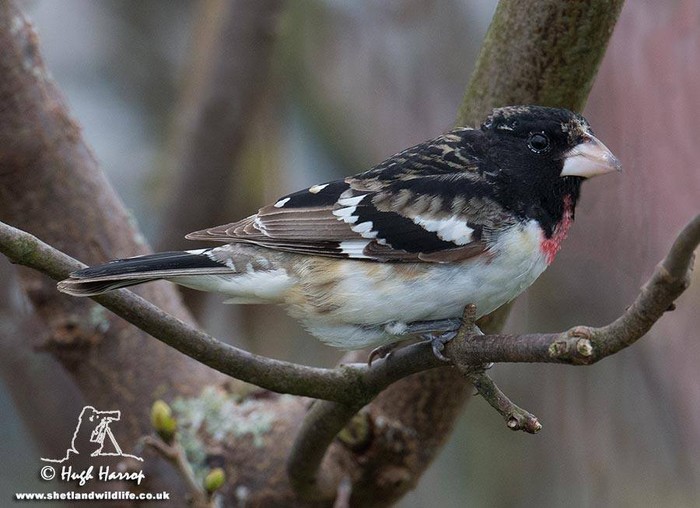
All the more easy for our national rare men to adjudicate upon was the marvellous singing first-summer male Rose-breasted Grosbeak on the Shetland Mainland - in place at the garden feeders at Toogs, on West Burra, near Scalloway for a second day on 4th (and twitched by a handful of birders) but departing overnight for a classic two-day spring stay.
Two days was the same length of stay for our only other spring bird, at Holme in 2006, and you can’t help but wonder where this particular ultra-distinctive, magnificent big-billed beastie will surface next. It could easily find itself on another feeder somewhere on Shetland - and that’s where the smart money is going (at the moment at least).
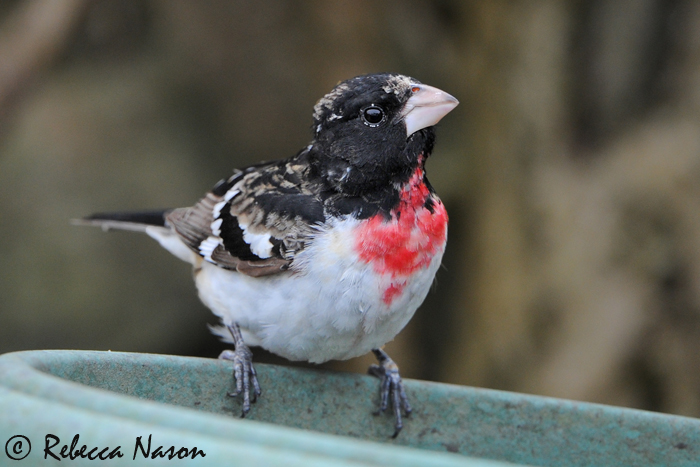
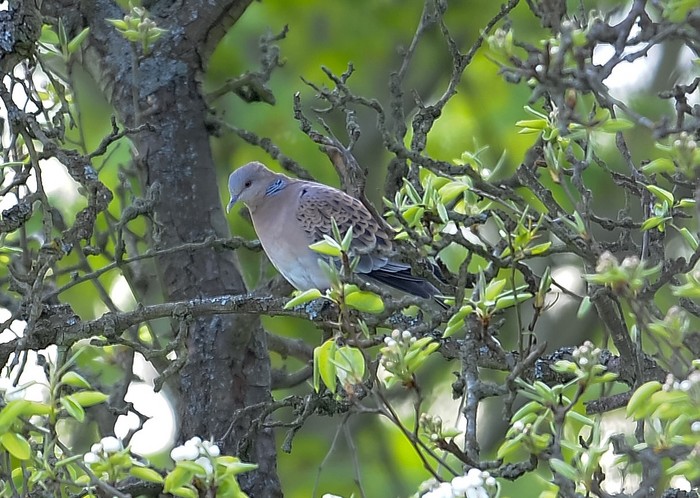
After all that time giving folk the runaround and not doing what it should be doing, the game that the Kentish Western Rufous Turtle Dove was playing was finally sussed out last week - and this week saw a continuation of the “early” and “late” pattern as this now-popular visitor to southeastern England continued to perform in the suburban confines of Otford through until 10th - see, there was no panic after all…
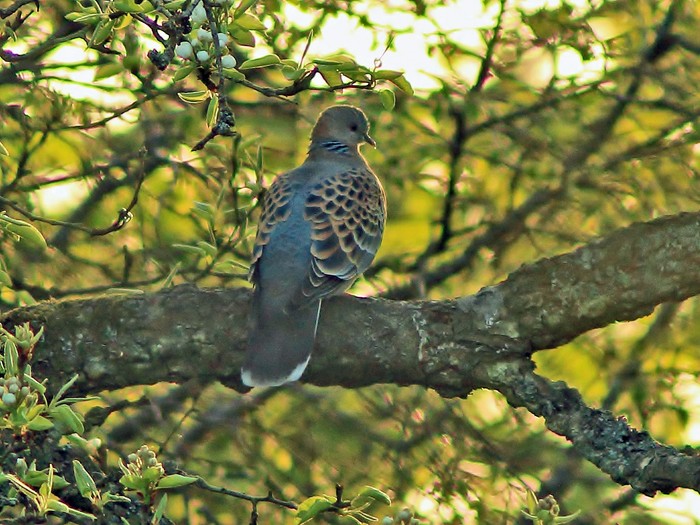
This county first has now been present for three months or so and with some 88 days notched up it has overtaken the Chipping Norton orientalis as the second-longest staying ”Rufous Turtle Dove” to be seen in Britain - there’s just the Highland meena of December 2003-March 2004 ahead of it, with 111 days stay the figure to beat.
A new Iberian Chiffchaff was reported belatedly from East Sussex this week, heard and seen on 5th at Bishopstone, near Newhaven but with no subsequent sign thereafter. If more comes to light to confirm the record, it will be the 6th of the spring to date and a first, not only for East Sussex, but the two allied counties as a whole.
Elsewhere. as the weekend loomed large there was just the one further Iberian Chiffchaff noted as “still present” - the Tresco bird still giving it maximum song, and showing well from time to time, along the Abbey at Well Cover, until 7th at least.
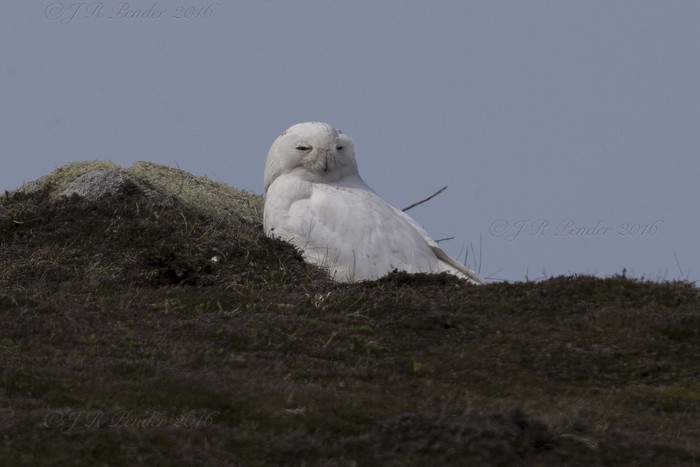
…and not too far away from the Chiffchaff was the splendid adult male Snowy Owl who began the week on the rocks near Tresco’s Castle Down before taking up station once more at Shipman Head Down, on Bryher on 5th-6th, shifting back to Tresco on the latter date. It continued to show around the islands through to 9th as well…
There’s nowhere else in the world where you can go from an Iberian Chiffchaff to a Snowy Owl within such a short distance and with flavours of the Mediterranean bringing added colour to Scilly this week (more on them later), these magical islands were certainly worthy of a visit.
Just when you thought it was safe to delete Hudsonian Whimbrel from the round-up template - after an absence of over a week, the first-winter hudsonicus was reported again on the beach at Marazion on the morning of 8th. Last seen on April’s last day, the bird has been back to those smuggler’s caves again - the continuing presence pushing the day total ever closer to the 200 mark, moving to 192 days in the general area now.
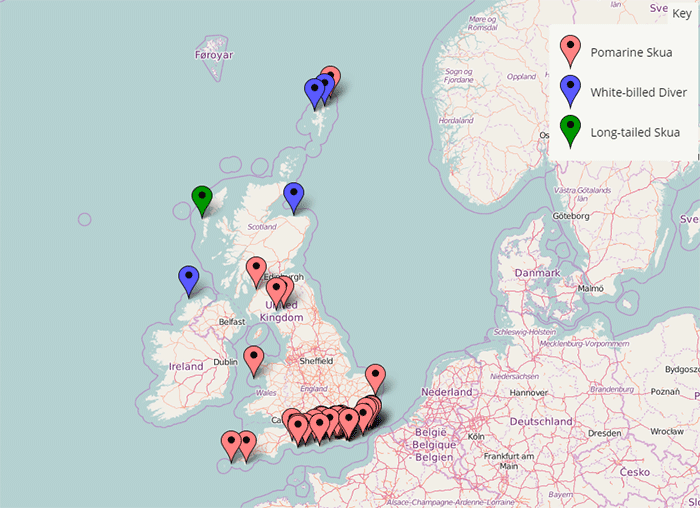
We have to start the seabird section with the impressive south coast movement of Pomarine Skuas - with the weather looking “bob-on” ahead of the weekend, the southeast winds providing perfect Pom weather through the Channel, there was no surprise to see a strong passage hit both the Sussex and Kent coast.
After a modest 4th brought barely double figures from Portland to Dungeness, numbers picked up markedly on 5th, with movements late in the day being a fair indicator of what was to follow the next day too…
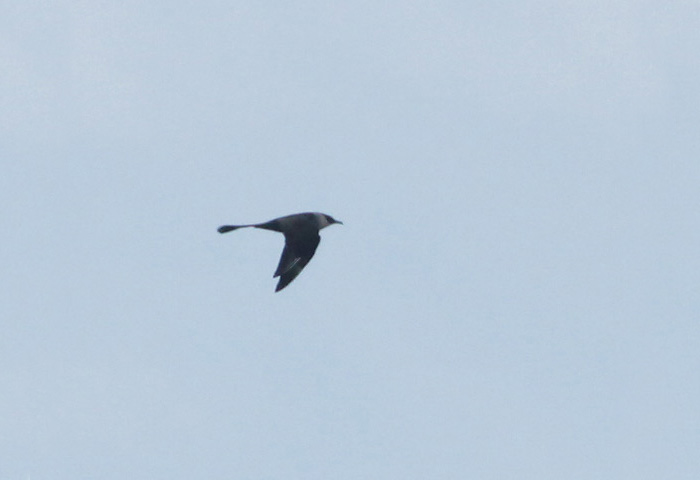
Dorset managed around 10 birds on 5th, with 11 off the Hampshire coast and 15 were seen past St. Catherine’s Point (Isle of Wight). In West Sussex, at least 33 were counted off Selsey Bill (with six off Rustington and nine from Worthing) while in East Sussex, at least 58 were recorded off Splash Point. Further east again, at Dungeness, a minimum 65 Poms were counted through the day, 55 of which passed the point between 6.45pm-9pm.
A busy early few hours continued to produce more Pomarine Skuas along the Sussex and Kent coasts - Dungeness out in front with 100 by noon, with counts of 62 logged at Splash Point and 51 off Birling Gap to a similar time.
The day ended with 121 for Dungeness, 76 for Splash Point and 62 off Birling Gap (with 15 off Portland Bill, 18 from Selsey Bill and 23+ off Bockhill Farm too).
A much less intense passage occurred on 8th - Dungeness birders registering 19 by noon (and ending up with 34) with 18 from Splash Point (ending up on 21), 12 flew past Cornwall’s Lizard Point and single figures were seen around Portland.
Numbers of Poms on the west coast were, by contrast, really struggling (unsurprisingly in the conditions) - five were off Balranald RSPB, North Uist on 4th, with two off Powillimount (Dumfries & Galloway) on the same date which also saw a couple trickle past Bowness-on-Solway (Cumbria). A pale adult went by Bardsey Island (Gwynedd) on 8th and two more made it around the corner to Suffolk on 6th, seen from Thorpeness.
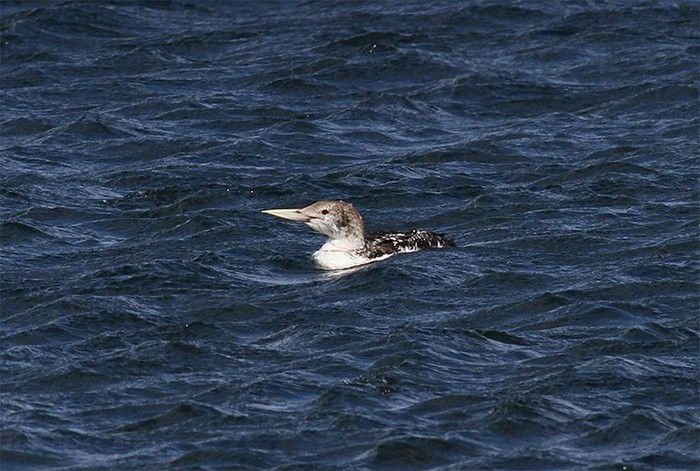
Some 20 were logged around the country on 9th, seven of which were seen from two separate Dorset headlands, Portland Bill and St. Aldan’s with a dozen or so more at the end of the week.
Balranald birders were the only ones to record any Long-tailed Skuas this week - 11 in all, with five seen heading north past Aird an Runair on 4th with six from the same spot the next day.
After a busy week last week, we’re down to low single figures for White-billed Divers - six seen over the last seven days, two of them on Shetland and three in Ireland.
The first was still around Basta Voe, Yell on 4th-5th with another flying north past Esha Ness, Mainland on 7th. The only other report came from Portsoy, where a single bird remained off the Aberdeenshire coast until 10th. Best of the lot? The fourth record for Donegal, seen off Tory Island on 8th with a gripping three of the enast end of the island on 9th (the other records coming in 2000, 2002 and 2014).
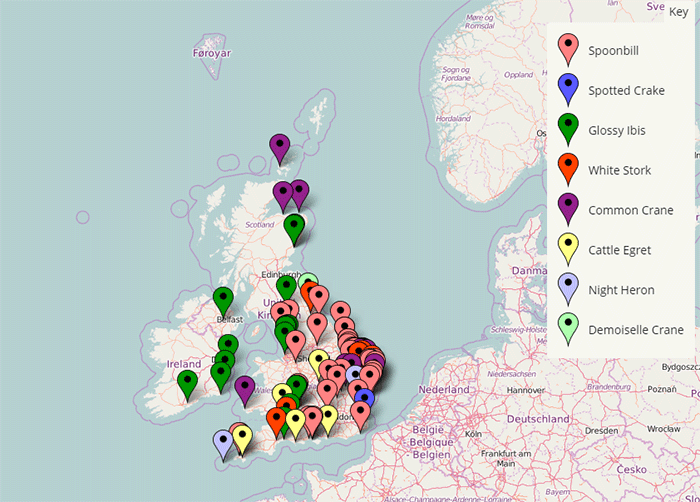
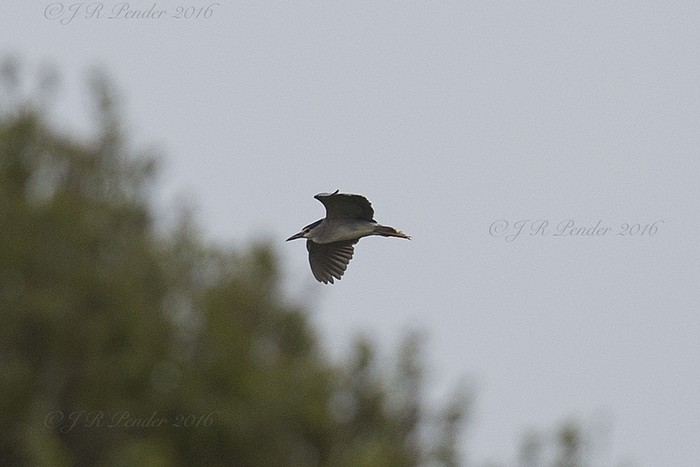
After an unconfirmed report of a Night Heron at the country park at Long Melford (Suffolk) on 4th, the first confirmed record of the year followed along soon afterwards on St. Mary’s (Scilly) where a near-adult was seen during the early evening of 6th.
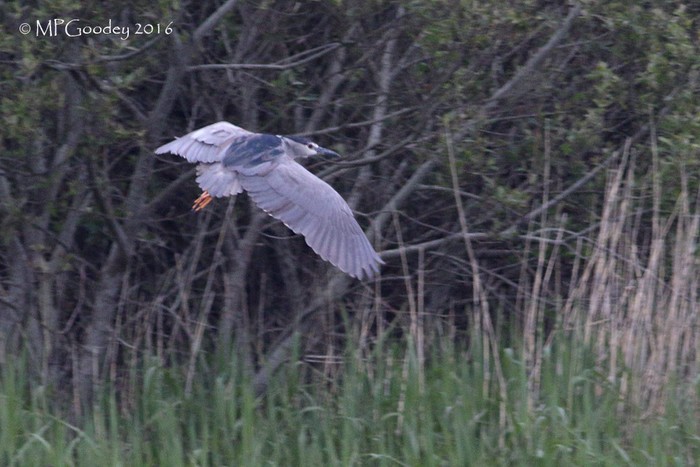
The new review period began with a Purple Heron being reported from South Benfleet (Essex) on 4th and it was followed by a single in south Devon and two birds along the Norfolk. In the southwest, an adult was found at Beesands Ley on 5th departing for nearby Slapton the next morning where it was seen later the same morning. Also on 6th, a Purple Heron was found on the Ken Hill Marshes, near Heacham, appearing later at nearby Snettisham Coastal Park while the warm, sunny morning of 8th saw a coasting bird head over the cliffs at Sheringham and then Muckleborough Hill, Weybourne before going to ground somewhere…
Seven Glossy Ibis were noted in Ireland this week, accounting for over half of the dozen birds recorded in all; in Wexford, three remained at Cahore until 8th and one was at Tacumshin to the same date. A new bird surfaced in Cork, at Midleton on 5th and singles elsewhere stayed at East Coast NR, near Newcastle (Co. Wicklow) to 4th and Portmore Lough RSPB (Co. Antrim) to 8th.
Two singles were in close proximity of each other on 8th in Merseyside and Lancashire - one was at Marshside RSPB (having arrived there on 5th) and another was some five miles away at Hesketh Out Marsh RSPB at the same time, with one of these appearing at Crosby Marina on 9th. Lingering loners remained at Seaton (Devon) and Slimbridge WWT until 8th (appearing at nearby Splatt Bridge the next day) and at Ham Wall RSPB (Somerset) to 9th while new (and quite some record they were too) were the duo found at Montrose Basin (Angus) on 8th - these being the first for the county, they were still present next day.
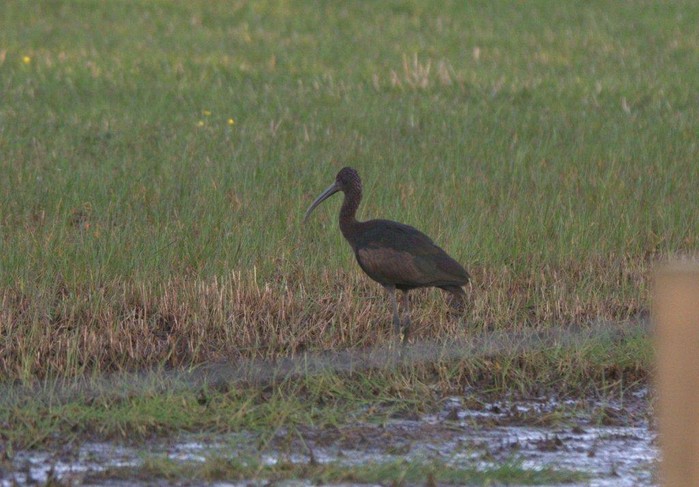
After almost 1o days away, the Cattle Egret in West Sussex was back at Pagham Harbour on 5th and 6th. New were the birds seen at Lodmoor RSPB (Dorset) on 6th and then (same bird?) Pennington Marshes (Hampshire) on 7th with the same date seeing a morning only bird appear with cows close to the A149 near Wells (Norfolk) and also on the Somerset Levels, at Ham Wall RSPB. In Ireland, a Sunday bird was at Tacumshin (Co. Wexford) on 8th and a Cornish Monday bird was near Helston on 9th.
Going up in number and doubling last week’s total were the 45+ Spoonbills noted from 12 English counties. At least 10 were in Norfolk, including threes on 7th at both Cley and Holme, while the largest single group of the week was the five at Skegness (Lincolnshire) on 8th (part of nine seen in the county); another five appeared later the same day at Saltholme Pools RSPB (Cleveland). A group of four was a great find inland at Summer Leys NR (Northamptonshire) on 7th and another notable inlander arrival was at Broom GPs (Bedfordshire) on 6th-7th.
Another foursome was seen on the Suffolk coast, at Minsmere RSPB on 5th (eight were in the county in all), three were at Dungeness RSPB (Kent) on 10th and other 1’s & 2’s were dotted around the country from Cornwall to Lancashire and Cumbria on the west side, to Hampshire, Essex and East Yorkshire on the south and east coasts, with one for Cambridgeshire too.
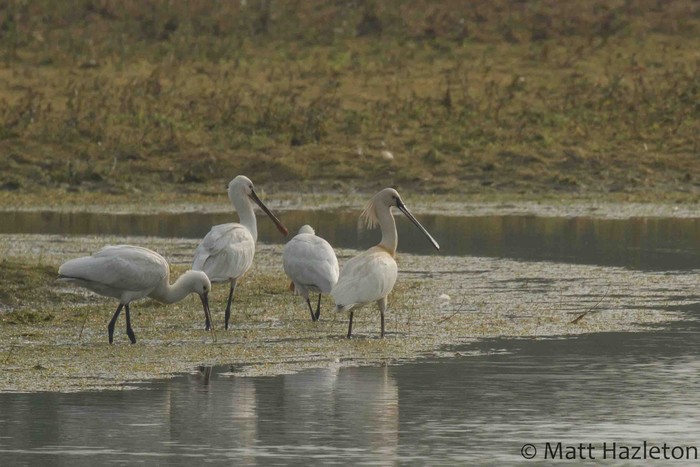
Around the Norfolk coast, Common Cranes stretched their sizeable wings once more for flyovers on both 5th and 6th; the former date saw five tour across Titchwell RSPB and then Holme while two headed low over the church at Langham the same day. What was presumably the same two were tracked the following morning from the back end of Cley village through to Weybourne and then Felbrigg. Other East Anglia birds were one at Lakenheath Fen RSPB on 4th and at the other end of Suffolk, over the Carlton Marshes on 5th.
Pembrokeshire’s first Crane since the end of 2010 was seen over the Gann Estuary on 5th and the only others noted were two in Aberdeenshire, heading west over Troup Head on 7th with maybe the same ones at Garmouth (Moray) on 8th. Another Scottish single was found on The Loons RSPB, Mainland Orkney on 9th.
There’s just one singing Spotted Crake to mention this week - still at Leighton Moss RSPB (Lancashire) until 9th at least.
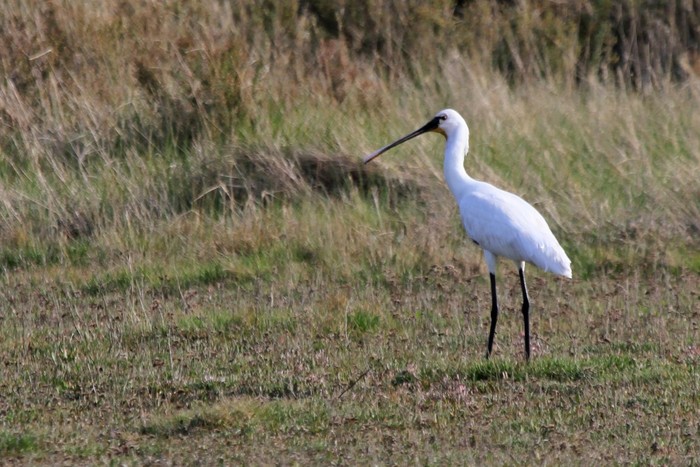
An apparently unringed White Stork was reported circling over the Waterfowl Park at Pensthorpe (Norfolk) on 8th (after one was seen by a housing estate in nearby Fakenham on 3rd…). The next day, maybe this bird heaeed over Holkham and Wells, before venturing west to Titchwell and then (assuming it was the same bird) tracking back southeast, inland over Hunworth.
Norfolk, sadly though, remains an unholy mess, a great big storky, ill-thought out mess…
A bird of unknown origin was at Carlton Marshes (Suffolk) on 5th and was the only potential genuine bird on offer this week until the real deal circled over the Somerset countryside, near Curry Moor from 8th and the week ended with one in Durham, at Brancepeth and one at Exminster Marshes RSPB (Devon). That’s more like it…
Popping up for the first time in a month or so was the on-the-run Demoiselle Crane - having given up the ghost in Cumbria at some point last month, the sunny weather of 4th saw the wonky-legged drifter head south over the Clara Vale LNR (Co. Durham); a west to east “migration” of some 70 miles or so, from one side of the country to the other, which would have excited those still championing the cause.
Look, if we can’t have the Spurn one, there’s no way on earth you can have this one. Simple as that. No credentials = no record.
Nice try and fair play I guess, but resistance is futile.
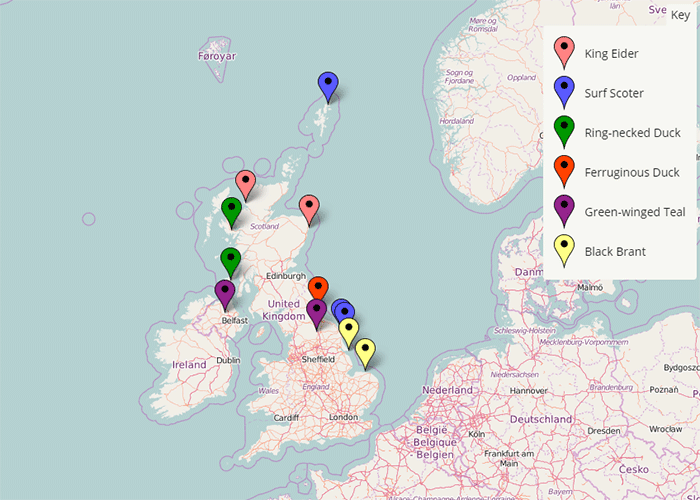
There’s little to mention for this section as most of our remaining quaking and honking buddies are concerned - a single drake Ring-necked Duck was found on Loch Meodal, Skye on 8th and the same date saw the continuing presence of one on Islay, at Loch Finlaggan. The suspiciously long staying drakeFerruginous Duck was mentioned for the first time in an age in the pens at Washington WWT (Co. Durham) on 9th while two new Green-winged Teals were also noted; at Lough Beg (Co. Derry) on 4th and Nosterfield (North Yorkshire) on 6th-8th (one was present here in mid-April).
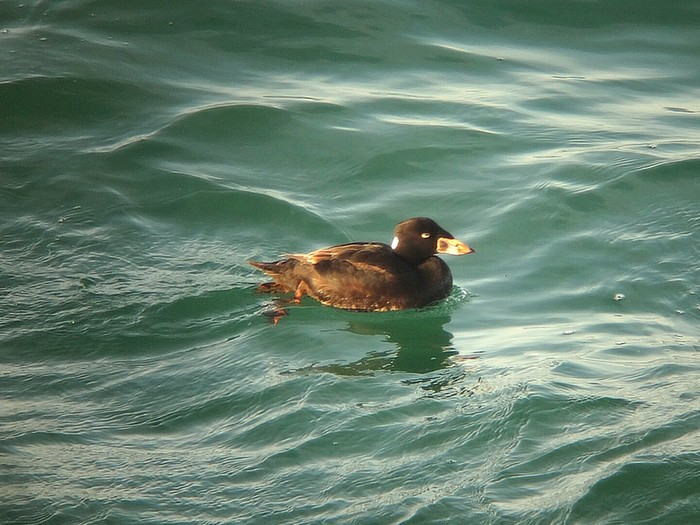
The Filey (now) 1st summer drake Surf Scoter had a paddle down the coast and over the county boundary in to East Yorkshire this week, spending 4th-5th off Flamborough Head before returning to North Yorkshire for 6th-10th. One further drake was seen, this one around the fish cages at Belmont, Unst (Shetland) on 4th-7th.
Two drake King Eiders to mention next - again in Highland, still off Achiltibuie on 7th before moving a mile or two on 9th and along the Ythan Estuary (Aberdeenshire) on 8th-10th.
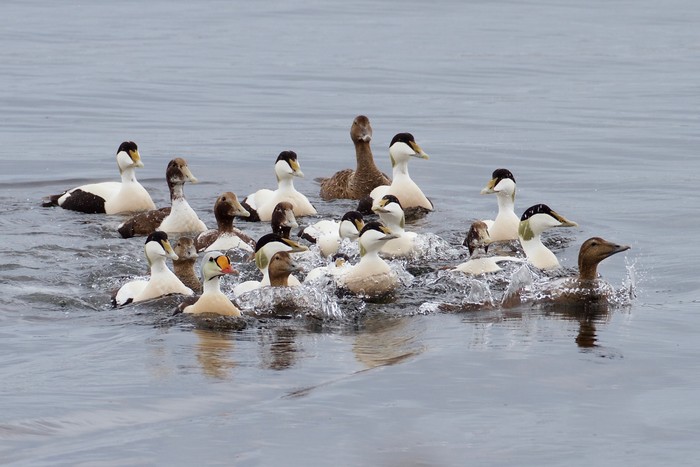
Both of last week’s two single Black Brants were in place until 4th - still on the slatings on the edge of Blakeney harbour (Norfolk) and along the Humber Estuary at Spurn (East Yorkshire).
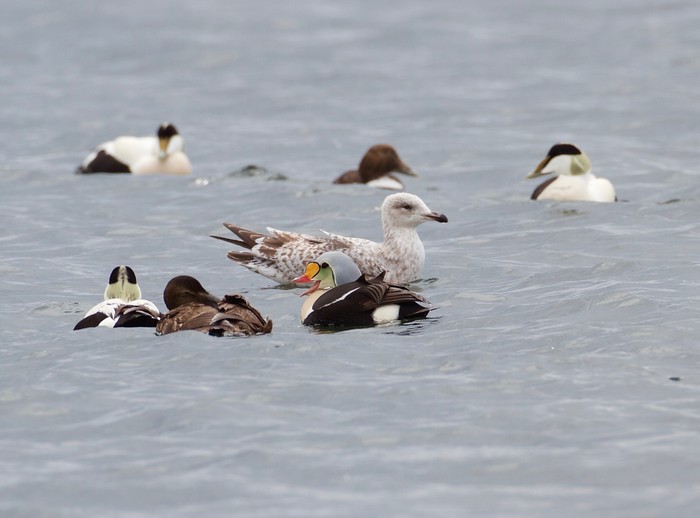
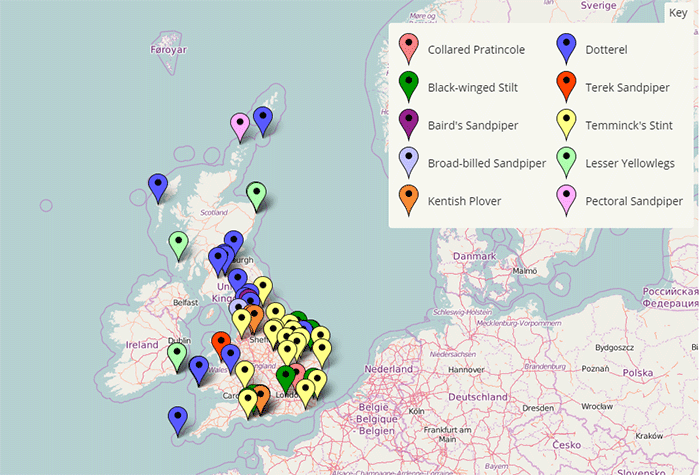
Terek Sandpiper is still a rare bird anywhere but it remains especially scarce on the west coast and in Wales in particular, so news of a five minute bird at Ynys-hir RSPB (Ceredigion) on 9th will have been gripping stuff for any Welsh listers where this could become only the 3rd record for the Principality (the first was in Conwy in 1999, the second on Anglesey in 2005).
An apparently brief fly-by Collared Pratincole wasn’t too much of a surprise on an east-sou’east wind on 10th - this first of the year flew east at Rainham Marshes RSPB (London) during the middle of the evening on 10th - potentially the second for the London recording area, the first was also at Rainham in July 2005.
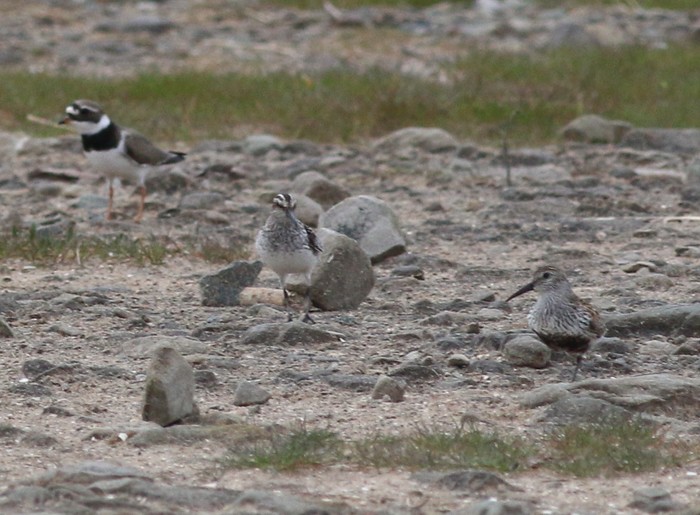
The second Broad-billed Sandpiper of 2016 was a great find, albeit a brief visitor only, to the Marshside RSPB reserve on Merseyside on 8th - the first for the area since one was at the very same site on May 15th 1988 (and the first in Merseyside and Lancashire for 10 years, since one at Cockersands on May 15th 2006) and this is the 11th record for Lancashire as a whole.
Lancashire scored an exceptional spring Baird’s Sandpiper on the evening of 9th at Stocks Reservoir - if accepted it will become the sixth county record and the first since 1991 (and of the 400+ records to date, just six have been seen in May, the most recent being on Tiree in 2007).
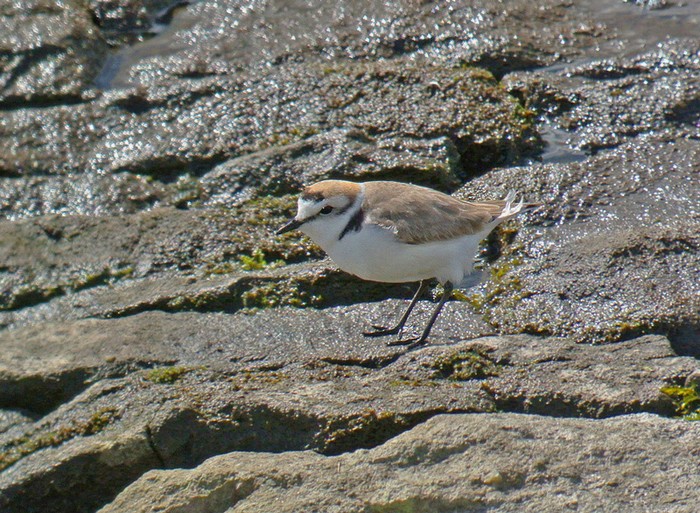
Staying in the northwest where perhaps even more remarkable than the appearance of the male Kentish Plover at Audenshaw Reservoirs, on the edge of Manchester on April 25th-26th was the incredible reappearance of the same male, back at the same reservoir this week - back again on May 6th. Where on earth has he been in the intervening 10 days or so? Wherever it was, maybe he’s gone back there as there was no sign on 7th…
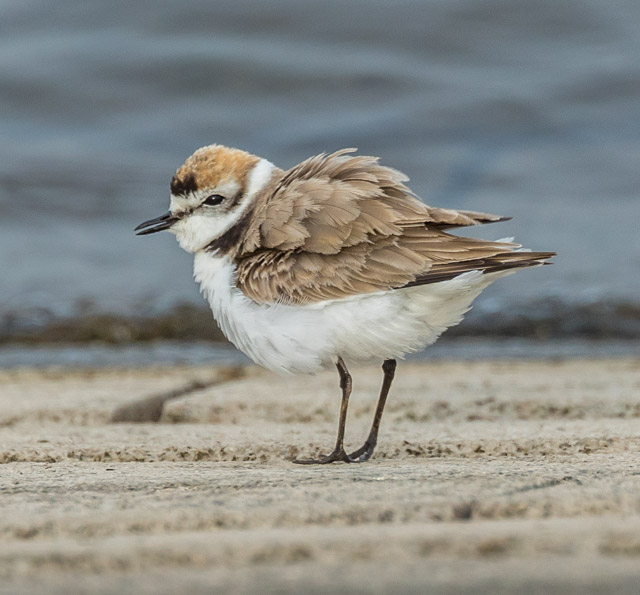
Rather more typical KP records came from one area of Dorset; on 6th, one was reported flying by Hengistbury Head while on 8th, one was seen in the adjacent Christchurch Harbour.
The same area of Hegistbury Head also saw two Black-winged Stilts pass through and head up the Avon Valley on 6th, with a further five logged through the rest of the week. Also new, earlier in the week were two birds at Island Barn Reservoir (Surrey), seen there on 4th - just the fifth county record and the first in almost 45 years (the most recent was one in October 1973).
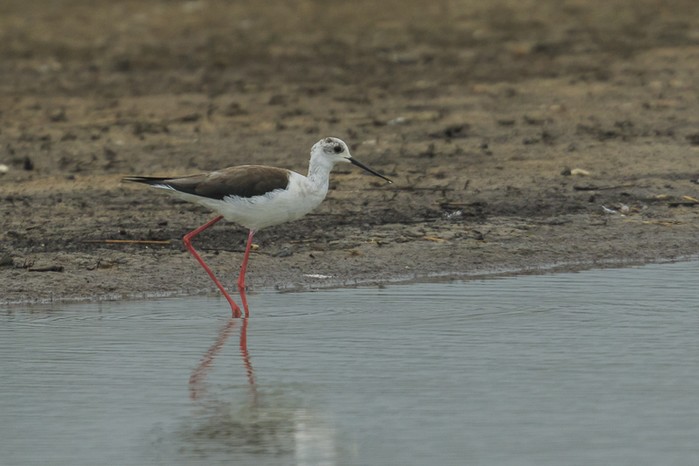
Further fresh Black-winged Stilts were at Grove Ferry NNR (Kent) on 6th and over Morden Bog (Dorset) on 7th (and then at Lodmoor RSPB on 10th) while the female at Frampton Marsh RSPB (Lincolnshire) moved to Anderby Creek on 5th, then was back at Frampton on 6th before heading over the Wash and along the north Norfolk coast to Cley on the early morning of 7th - only the second record for the famous reserve, the first coming in June 2012 (which was Norfolk’s last accepted record).
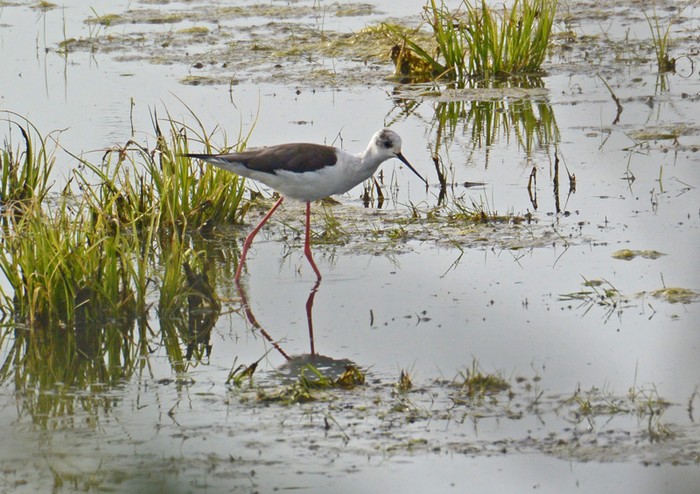
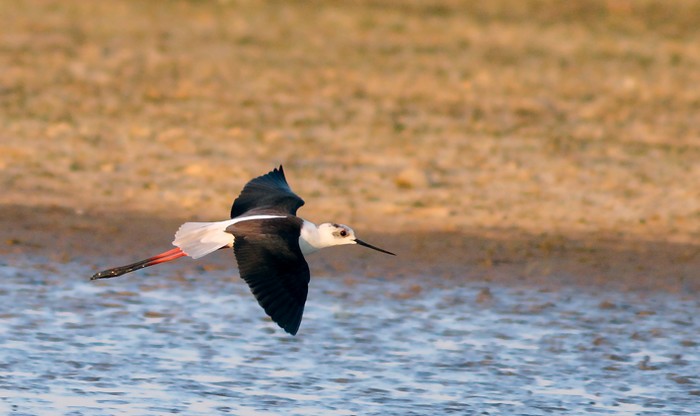
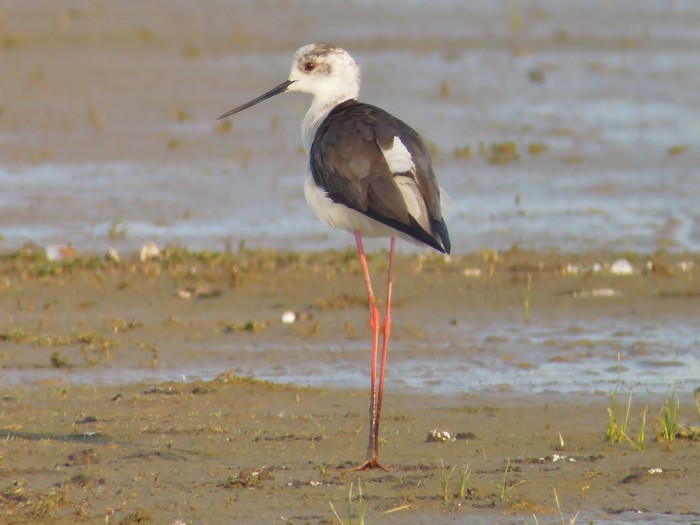
A new Lesser Yellowlegs made landfall in County Wexford on 5th, found at Lady’s Island Lake for what becomes the 30th (at least…) record for the prestigious county - it is also the fourth May Wexford bird; the first two being found on Tacumshin in 1965 and 1987 with the most recent record county record for the month coming to Ring Marsh on May 4th 1996 (a bird which went on to summer at Tacumshin).
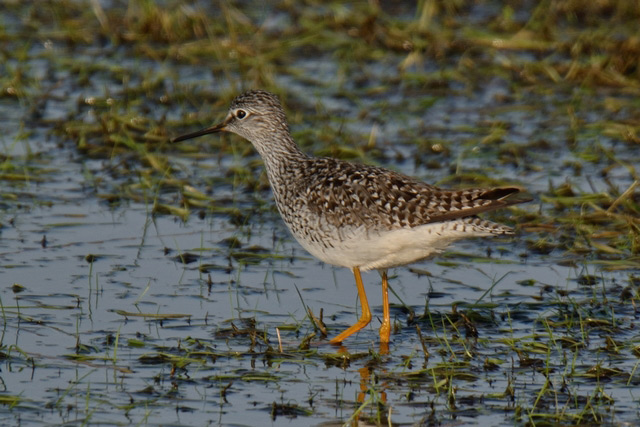
The second freshly-arrived Lesser Yellowlegs of the week was found at Kirkton of Logie Buchan, close to the Ythan Estuary (Aberdeenshire) during the afternoon of 7th - potentially the eighth for the county and the first since one was accepted in September 2009 from the Loch of Strathbeg (although one was reported from near the same site in July 2014).
Third up, the Lesser Yellowlegs that remained at Loch Gruinart RSPB, Islay (Argyll & Bute) until 8th - the tenth example of the species for the county and the fifth for the reserve in all.
Interestingly, of the 519+ acceptances to date, 59 of those Lesser ‘legs have been found in May.
The weather over the past seven days has been perfect for Temminck’s Stint to arrive and Norfolk lead the way (as usual with this species) with 10 in the county through the week, half of which were found at Hickling Broad NWT on 6th (with four there the next day). Three were at Titchwell RSPB on 7th and singles were at Welney WWT on 6th and at Cley Marshes NWT on 8th.
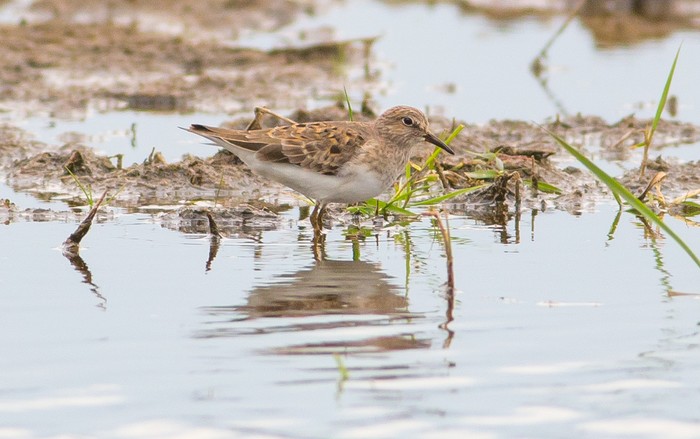
In Suffolk, three were on the marshes at Southwold on 5th-7th, a fourth arrived there on the latter date. Elsewhere in East Anglia, one made a visit to Paxton Pits NR (Cambridgeshire) on 6th while others were noted countrywide as follows; at Ferrybridge (Dorset) on 5th; at Rye Harbour NNR (East Sussex), Baston & Langtoft GPs (Lincolnshire) and Hatfield Moors (South Yorkshire) on 6th; Scorton (North Yorkshire) on 7th; at Pilning (Gloucestershire) and Sandwich Bay (Kent) on 8th with twos in Nottinghamshire, at Holme Pierrepoint and then Netherfield Lagoons and also Hoveringham GPs and ones at Frampton RSPB (Lincolnshire) and Hale (Cheshire), all on 9th.
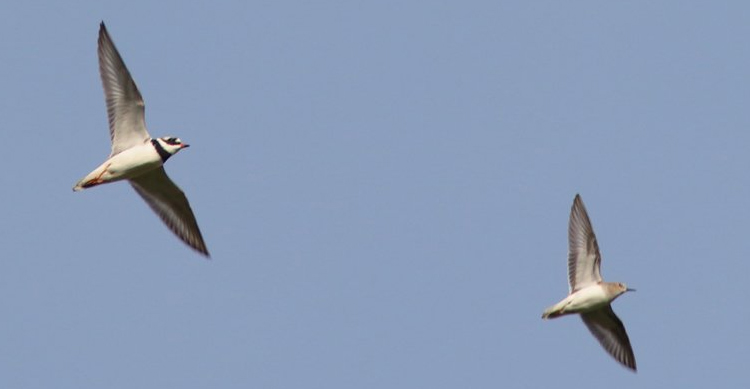
The trip-hop Dotterel-stop daisy age (look the sun’s out, there are birds about, this is taking an age to write and De La Soul have a cheery, summery vibe ok…) was in full swing this week, some 80 in all noted across England, Wales and Scotland.
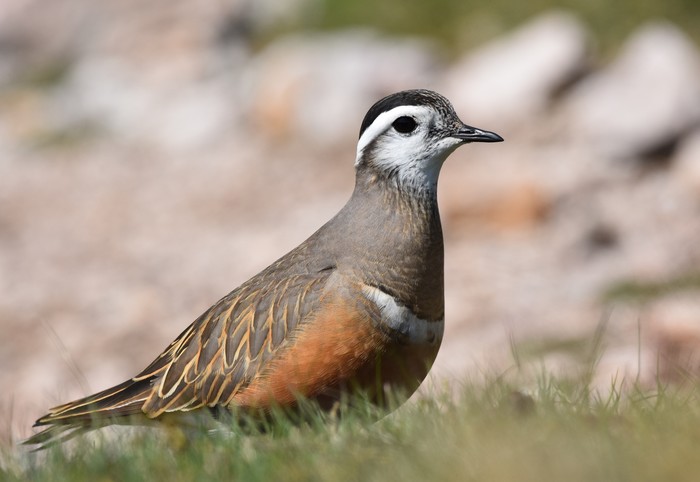
Top of the list still were the flock in the huge fields of Choseley (Norfolk) - numbers climbing to 18 there through the past few days to 8th before another leap on 9th to a monster 28. Other English birds were the seven at Ingleborough (North Yorkshire) on 6th, four on Pendle Hill on 6th with three other Lancashire birds at Ward’s Stone on 7th and three at the summit of Brencathra (Cumbria) on 5th while keeping out of the way of the Snowy Owl was a loner on Bryher on 7th-8th.
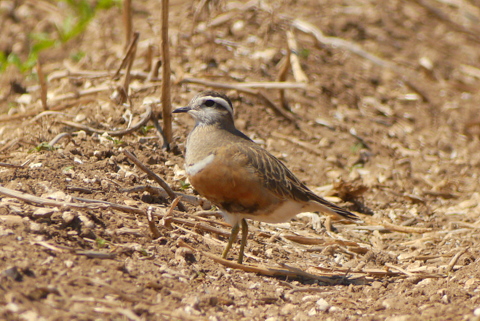
A super group of 13 Dotterel were found in fields at Martin’s Haven (Pembrokeshire) on 6th, departing over Skomer Island late in the day. Five other Pembs., birds were at Marloes on 4th while in Powys, a quartet were at Builth Wells on 4th.
Dotterels in Scotland, there were 15 of them, comprised five and then six at Blackcraig Hale (Ayrshire) between 6th-7th, two, then three at Carnethy Hill (Lothian) from 7th when another was on Fair Isle while four dropped in to Dumfries & Galloway/Clyde, at Lowther Hill, on 8th-10th with one on North Uist (Outer Hebrides) on 10th.
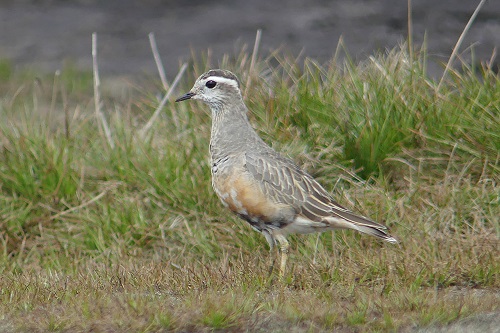
The year’s second Pectoral Sandpiper rounds this section off, seen on Papa Westray (Orkney) on 6th.
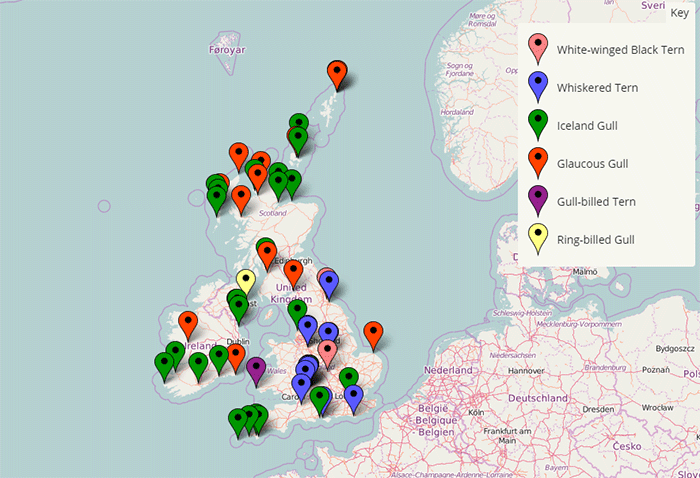
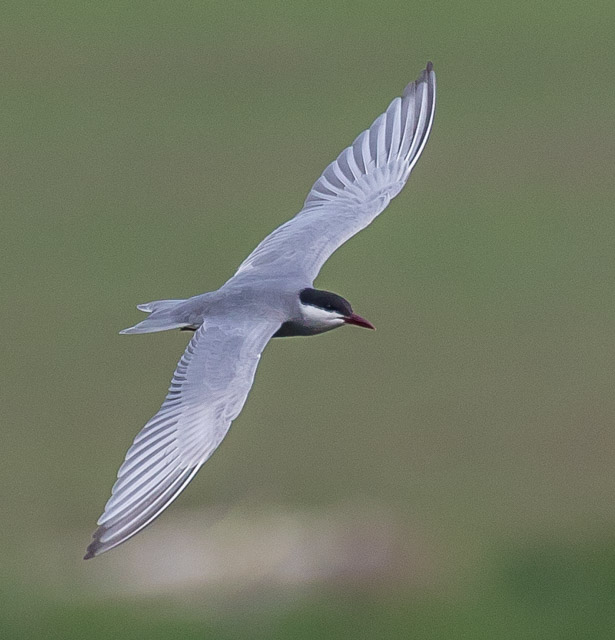
Warm weather and winds from the SSE meant that there was no surprise at all in the news of the first Whiskered Terns of 2016 made themselves known - setting the pace was a brief bird at Ham Wall RSPB (Somerset) on the evening of 5th and it was followed swiftly by two together on the pits at Long Eaton (Derbyshire) on the morning of 6th, a pair that moved over the border to Attenborough NR (Nottinghamshire) later the same day, where they remained until dusk.
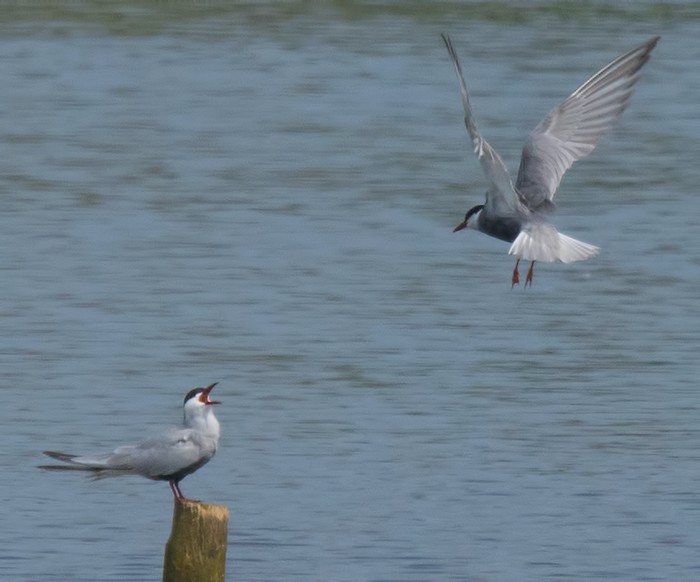
The fidgety duo were on the move again soon enough though - sometime between dusk and dawn they moved some 55 miles to the WNW, arriving at Elton Hall Flashes, Sandbach (Cheshire) on the morning of 7th where they remained until mid-evening at least. A further duo were seen briefly at Keyhaven Marshes (Hampshire) on the same day and the 8th then saw two (more?) head north along the Severn Estuary, at Awre (Gloucestershire) and another two (maybe from Cheshire?) surface at Saltholme Pools RSPB (Cleveland), these on site to 10th when at least one was noted back in Gloucestershire, at Oldbury Power Station.
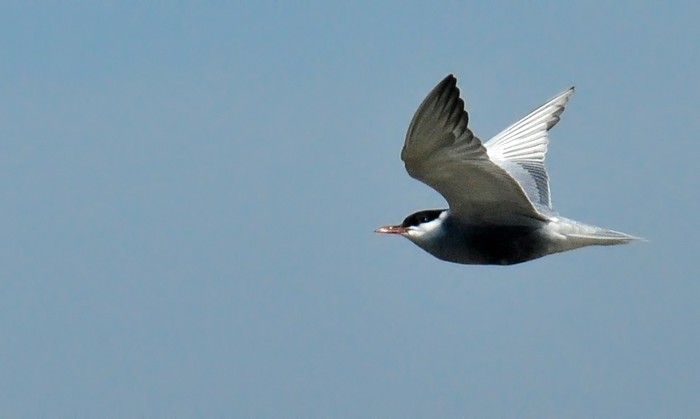
Somerset has a total of nine records of Whiskered Terns to date, the most recent being two that were seen in April 2013, while Derbyshire has five previous records, four of them coming since 2009, the year that the amazing flock of 11 dropped on to Willington Pits.
Nottinghamshire has now moved on to five county records in all, the previous four all coming since 2002, the most recent being at Thrumpton on April 25th 2012 (a bird which also flip-flopped to Derbyshire). Cheshire has six records prior to this week, three of those since 2005 (when four were at Woolston Eyes in May of that year), the most recent of which was a juvenile at Inner Marsh Farm in September 2010. Hampshire has 10 records prior to this week, these being the first since 2010 while Glocuestershire’s most recent occurrence (of five accepted records) was in 2013 (a bird shared with Somerset). Cleveland has two previous records, also at Saltholme, in 2009 and ’10.
With the movement of marsh terns and were they (and the weather) was coming from there was little surprise when news of two White-winged Black Terns appeared on the pager on 8th - seen flying through Hurworth Burn Reservoir (Co. Durham), only the third record in the past 37 years; one was reported last summer off Whitburn and before that was an accepted bird, also at Whitburn in the summer of 2002. Three other records are on the county books, seen between 1968 and 1979. The following day saw another twosome reach Warwickshire’s Draycote Water - and they stayed in place until 10th.
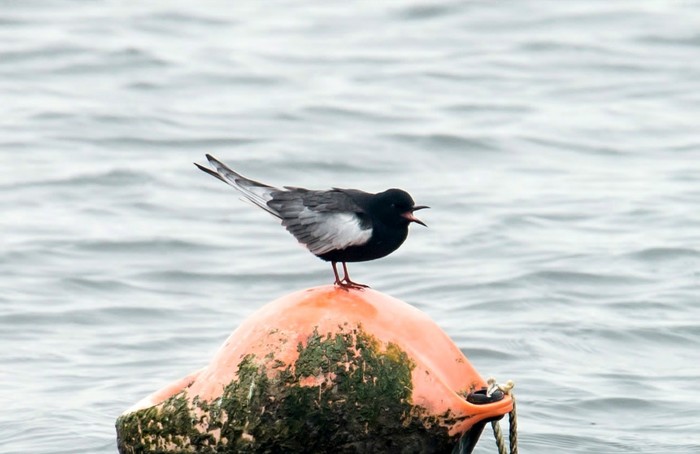
Keeping the theme of “1st for the year” up nicely this week was the Gull-billed Tern seen heading over Skomer Island off the coast of Pembrokeshire on 9th, the first record in the county since 1985 and potentially just the fourth-ever there.
The first Ring-billed Gull to crop up in over a fortnight was a first-sumer at Kinnegar Shore (Co. Down) on 7th.
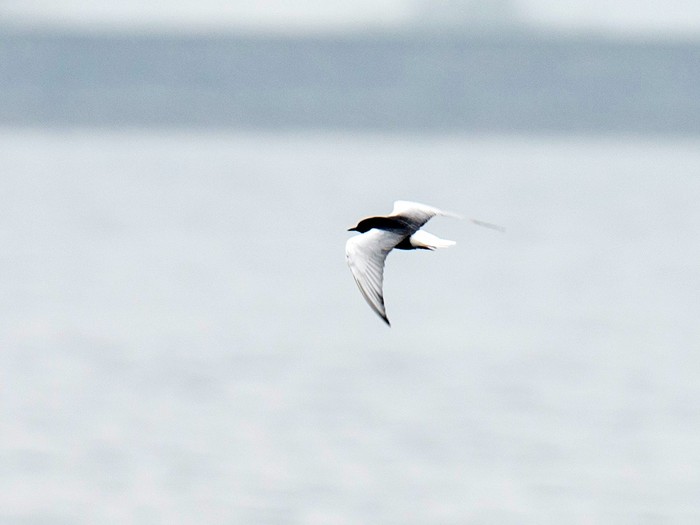
There were just 12 Glaucous Gull noted across Britain and Ireland this week, including two still at Nimmo’s Pier (Co. Galway), a two and two singles around the Hebrides with further lone birds in Kerry, Wexford, Highland, Ayrshire, Cumbria and Norfolk. As far as Iceland Gull goes, there were 25 birds in all, seen in Scotland (ten there, including three on the Hebrides), England (eight seen, with two still on Scilly on 5th) and Ireland (another seven seen, including three in Louth and two at Nimmo’s).
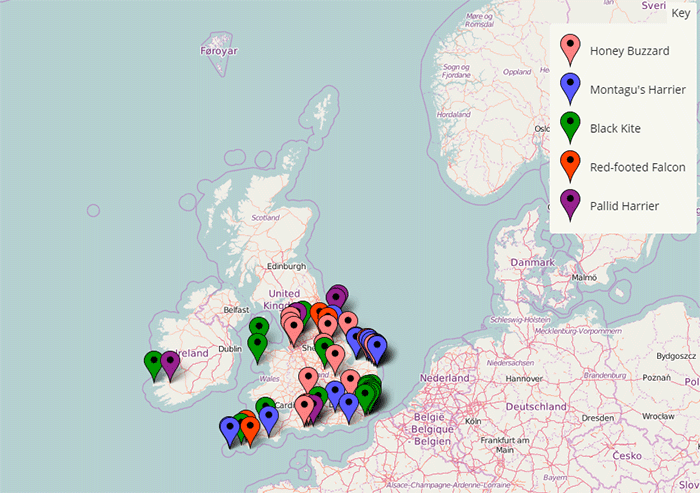
As with one or two other species that have shown themselves this week, there wasn’t too much of a surprise when news of a fly-through first-summer Pallid Harrier was logged heading across North Yorkshire on 6th - seen initially heading northeast at Wykeham Lakes, it was then picked up heading north at Long Nab, Burniston some 25 minutes later. Suspected as being this species, the identification was confirmed later in the day - becoming the first for North Yorkshire in to the bargain.
So far, there are five accepted records across the whole of Yorkshire; one in South Yorkshire, for just over two weeks in autumn 2012 with the other four appearing in East Yorkshire; at Spurn in May 2012 and April 2003, at Pulfin Bog in spring ’93 and shot near Driffield in September 1952.
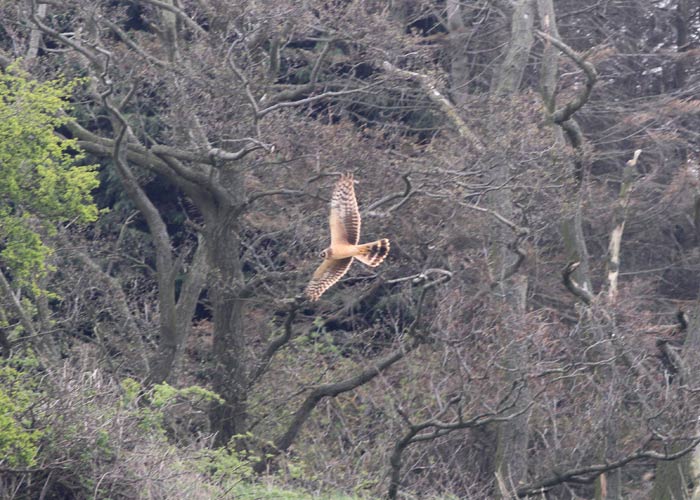
Along side those acceptances are reports from Spurn in September 2014 and two more from the same site through last autumn as well.
No sooner had the on-passage Pallid Harrier departed Yorkshire, then the opposing Red Rose county came along with one of their own - a potential “1st” for Lancashire, a ringtail, reported flying through the Brockholes LWT Nature Reserve on 7th and this was followed on 9th by a male over Kerry Airport for a potential county 1st (Ireland has just five accepted records to date).
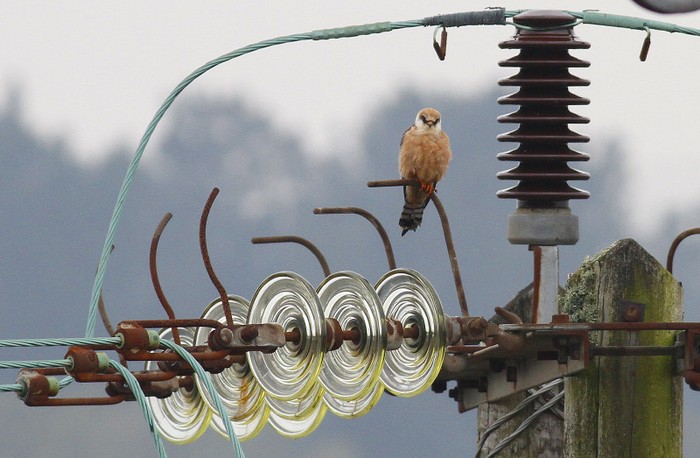
Last week’s predicted “prime candidate” for occurring this week (for a 2016 debut) was Red-footed Falcon and no sooner had the hefty tome of last week been posted on the RBA website then up popped a female of said species at Morden Bog NNR (Dorset) - present from 4th-8th at least.
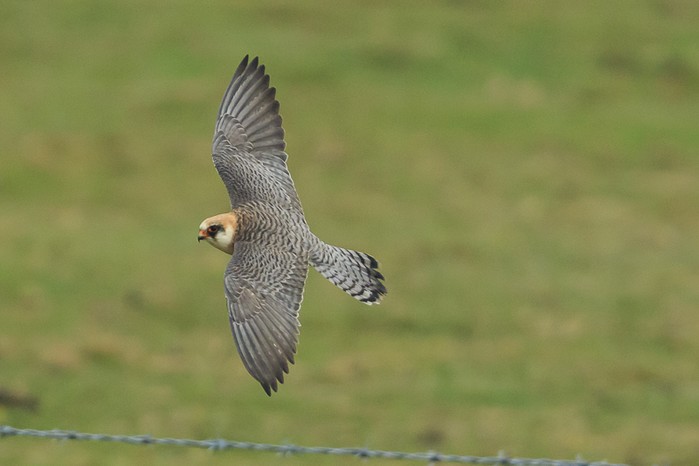
She was one of five reported; a male was seen late in the day at Hayle Estuary (Cornwall), also on 4th and another Cornish bird was reported from Bass Point, Lizard on 5th while on Scilly, after a “probable” was reported near Porth Hellick on the evening of 5th what was almost certainly the same bird was seen early the next morning at the nearby eastern side of the airfield.
In Norfolk, an adult male Red-foot was reported from Horsey on 6th and a second bird flew in-off at Sheringham on 8th before heading off inland. Also on 8th, a 1st-summer female joined the Hobbies at Thorne Moors NNR (South Yorkshire) and another female was at Swillington (West Yorkshire) on 9th.
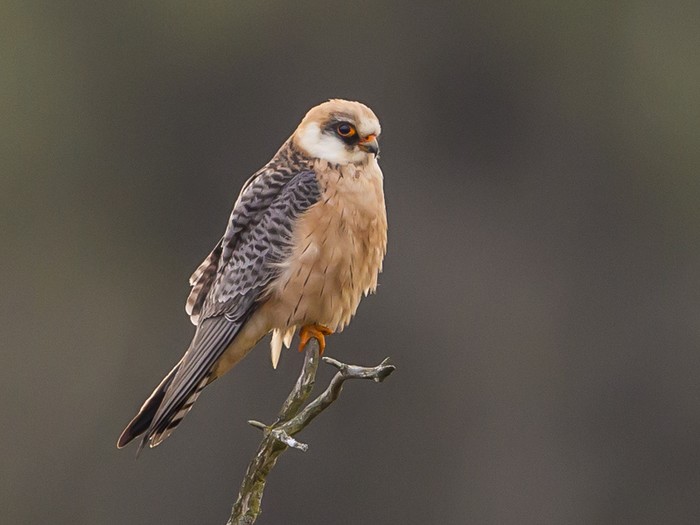
Warm weather and south to southeast winds not only means Red-foot but also Black Kites but as to how many there were, well, goodness knows!
Kent was the beating Black heart of the action - starting things off was one from Margate on 5th, with presumably the same bird heading over nearby Reculver the same day. That may have been the bird seen on 6th at Grove Ferry NNR but presumably the bird at Deal was different.
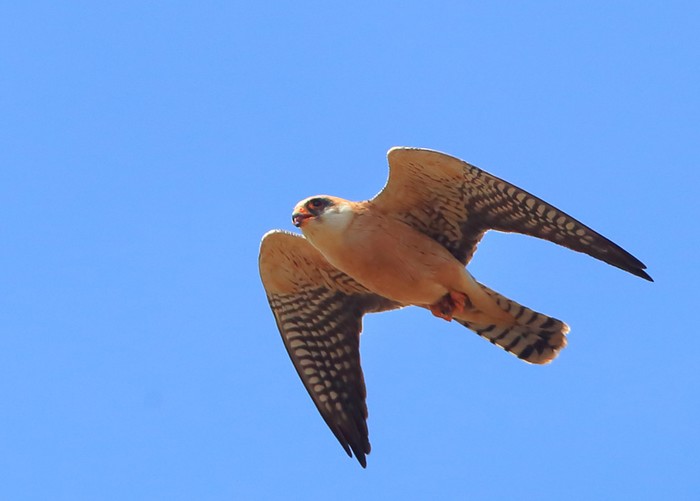
A busy 7th began with one over Dover with another just five minutes later at Folkestone. That second bird of the day could well have been the individual seen an hour or so later near Lympne and then near Peene, while the Black Kite at Kingsdown was maybe the Dover bird (or another new one - are you keeping up at the back?)
Four others were noted (perhaps surprisingly) - heading over Sabden (Lancashire) on 8th - potentially the first for the county since 2012, a bird which surfaced again the next day at Fulwood; in Cornwall, at Launceston, also on 8th with Kerry’s second great raptor of 9th being the BK that went over Baile an Reannaigh - another potential 1st (although one was reported in Kerry in March 2013). The final one for the week made it to Bardsey on 10th - the first in the county since one was seen on the same island on May 2012 - this week’s bird eventually made it to Anglesey later the same day, seen over The Range RSPB.
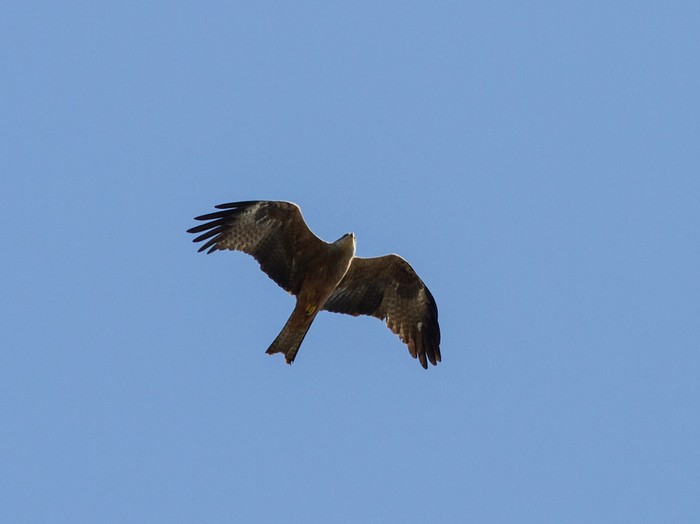
Six (or seven) Montagu’s Harriers were seen around Norfolk through the week - a ringtail was noted near Holme on 5th and was followed by a ringtail at Felmingham on 6th, an adult female over the saltmarsh at Titchwell RSPB on 7th (possibly one in the same as the Holme bird?) and then over Felbrigg on 8th. The latter date saw news of another ringtail in east Norfolk, at Hemsby which may have been the bird seen on 7th at Winterton and a male was reported from Warham on a soggy 10th.
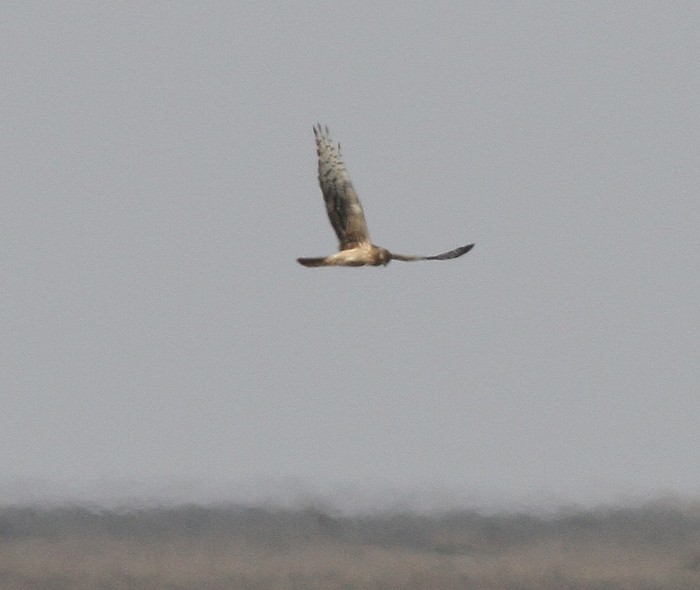
New birds elsewhere were a male at Thorncombe Street (Surrey) and a ringtail over the Friston Gallops (East Sussex), both on 7th while the adult male Monty’s was back at Blacktoft Sands (East Yorkshire) on 8th (where a female was noted to 4th) and another male was seen heading towards Devon from Cornwall’s Penlee Point on 8th. The final of the ten birds this week was the adult male that remained around St. Mary’s (Scilly) to 8th.
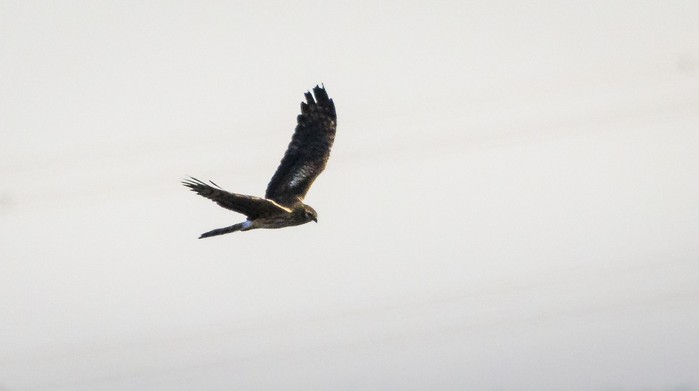
Making use of the thermals for good transit were up to 14 Honey Buzzards reported across the country this week. Three started the week off, seen over Hale (Cheshire), Rimrose Valley on Merseyside and Upminster (London). Three more were noted on 5th, at Margate (Kent), Oaksey (Wiltshire) and reported near Islip (Northamptonshire). Two birds were seen with Commons at Sutton (Norfolk) on 6th along with others in Nottinghamshire (at Lound) and Dorset (at Lytchett Bay) while the weekend saw one reported from Southport (Merseyside) on 7th with two reported the following day over Loughborough (Leicestershire) and also at Donna Nook (Lincolnshire). The final day of the review period saw one mentioned over Weybourne (Norfolk) post the cessation of the rain.
The third male Black-headed Wagtail (and coming less than a week after the Norfolk bird) was a brief (but photographed…) visitor to the west Wales coast on the morning of 8th - seen in fields at Whitesands Bay (Pembrokeshire); the second record in the county in the last three years (following on from a male at Marloes Mere on May 12th-13th 2013. The only other record for the county was another male, seen on Skomer on May 7th 1986.
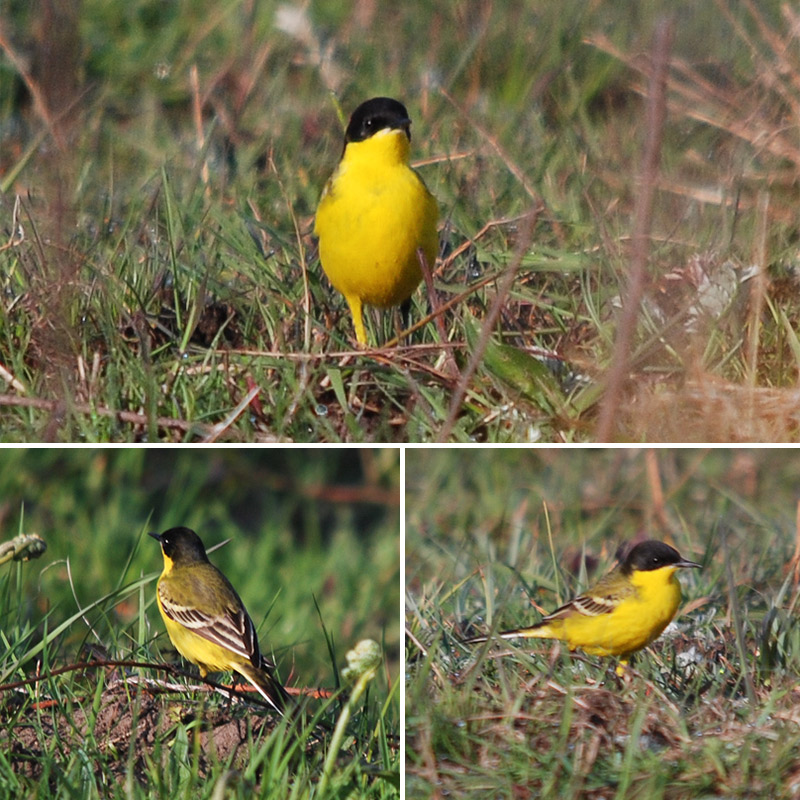
Another Welsh wagtail on 8th, another male with a black head, was found on the River Clywd, at Ryhl (Denbighshire) - there seemed to be green extending some way up the back of the nape (more Black-masked, then Black-headed) - so perhaps something else was in this gorgeous thing’s gene pool. Either way, it had come from a decent distance away - but aside from feldegg what could be the other parent?
On what should have been a classic east coast day on 10th, Fife’s Isle of May got the ball rolling with smart double before breakfast was finished - landing both a Thrush Nightingale and a Citrine Wagtail, two further new birds for 2016. The former is the first on the island (and in the county) since 2012, the latter the first since autumn 2014 (and only the third-ever for Fife).
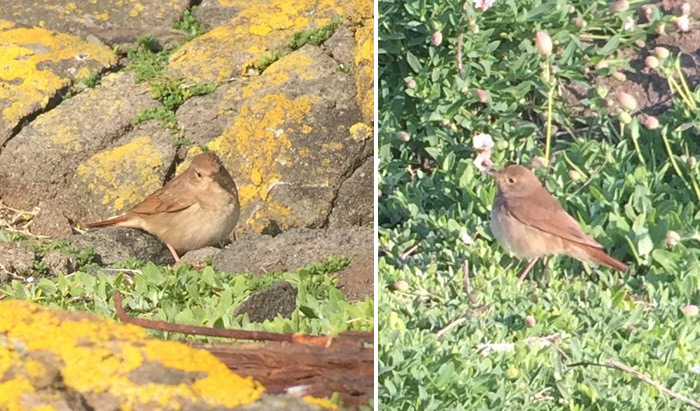
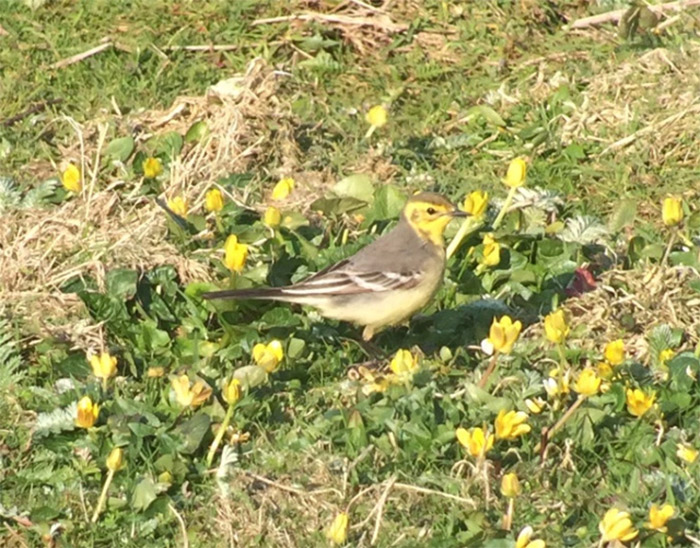
The second Citrine of the day, a female, was found at Seaton Common (Cleveland) during the same morning, just the fourth record for the area and the first since 2009, with the second Thrush Nightingale arriving in the afternoon on Brownsman, Farnes (Northumberland).
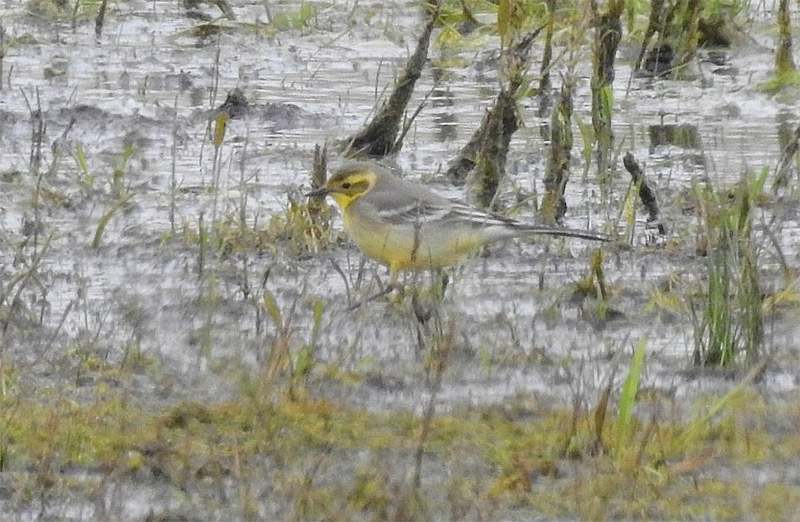
Dusky Warbler wasn’t really on anyone’s radar in Norfolk for this past weekend - or probably anywhere else for that matter - but that’s where we’ll start this section of the round-up for the exceptional record of a singing male in the bushes at Hickling Broad NWT on 7th.
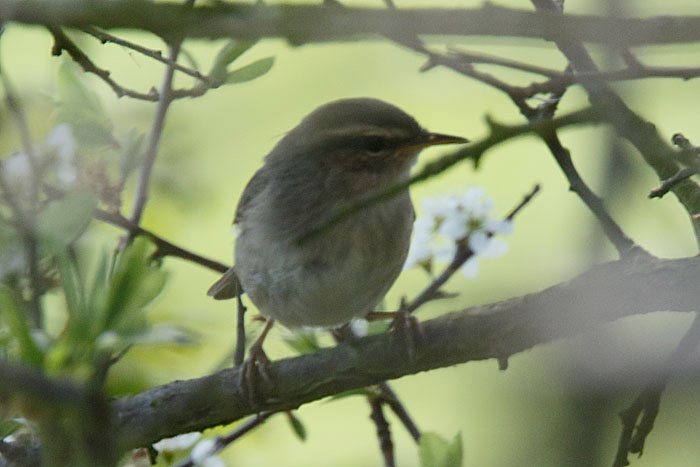
Prior to the species’ removal from the Rarities List at the end of 2005, there were just six May records of this rather subtle, but quite dashing Phylloscopus warbler - on the Calf of Man in 1970, Norfolk’s Holkham Meals in 1985, Wexford in 1990, Shetland in 1995 and, within aday of each other, in Somerset and Gloucestershire (same bird maybe?) in 2004.
Have there been any others since then? Well, muggins here has had a quick spin through the archives and aside from a possible in Kent and two reports of possibles/probables in Norfolk, there’s not been a confirmed May Dusky Warbler since 2004 (there was an early June one on Blakeney Point in June 2008).
A singing Dusky Warbler is quite something then - and what makes it all the more striking as a record is that it was found in the same set of trees, by the same observer, who found last year’s singing male Western Bonelli’s Warbler (almost) this time last year.
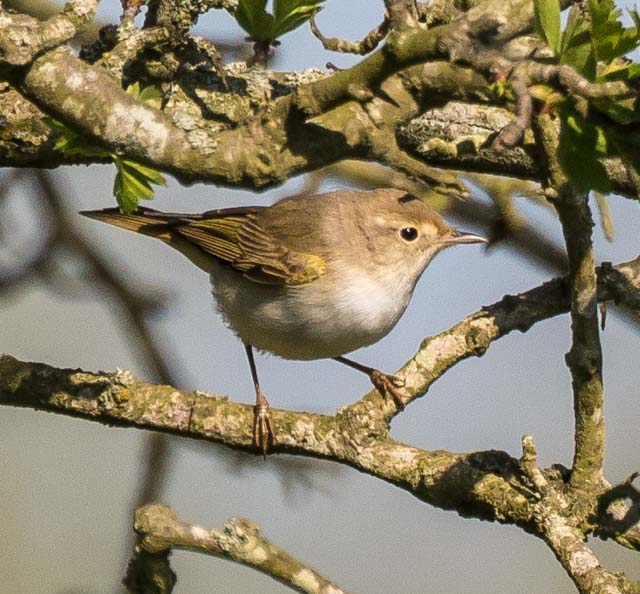
Talking of which...
...dippers at Gibraltar Point sought salvation in the discovery of a singing Western Bonelli’s Warbler on 8th - once the songster’s identity was confirmed, it becomes a 1st county record; there’s not even been a Bonelli’s Warbler sp., before in Lincolnshire - it really is quite a place Gib….
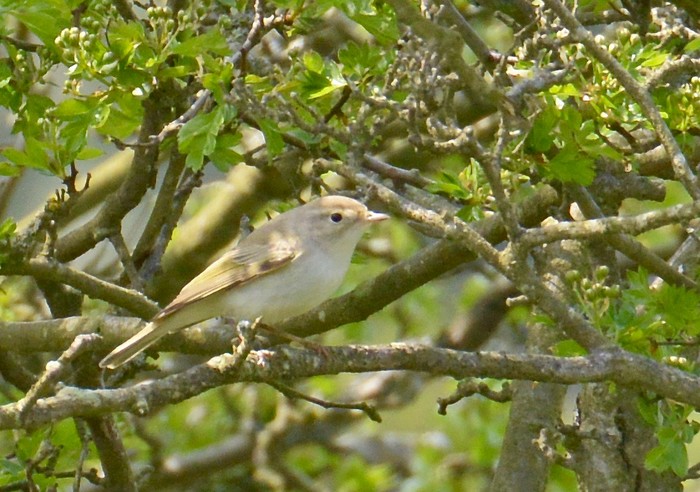
In Ireland, a male Western Subalpine Warbler was found on Wexford’s Great Saltee Island on 8th - we’re lurching towards the date last year that saw a male Moltoni’s hit Blakeney Point, so careful scrutiny will have been employed on the Saltee male for sure…and what a beauty he was too.
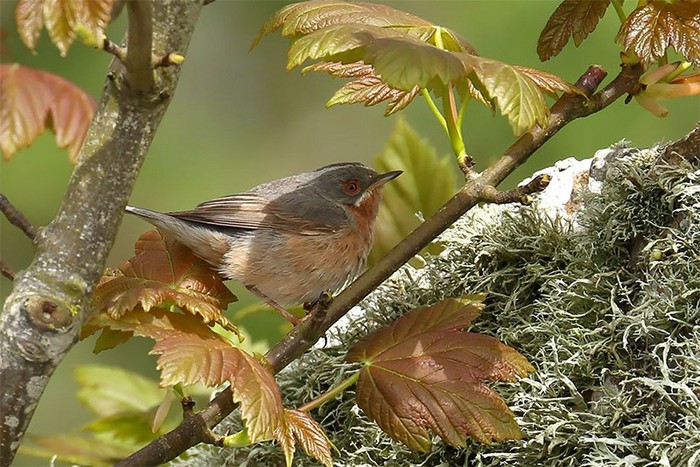
In the far off north, on Shetland three further Subalpines arrived with 24 hours across 8th-9th. A non-specific female was found on Whalsay on 8th and a female Eastern Sub-A was located on top of Ward Hill, Fair Isle the same day with a male Eastern appearing in gardens at Mossbank, Mainland on the morning of 9th while Fair Isle decided to show everyone who’s boss by scoring male and female Westerns the same day.
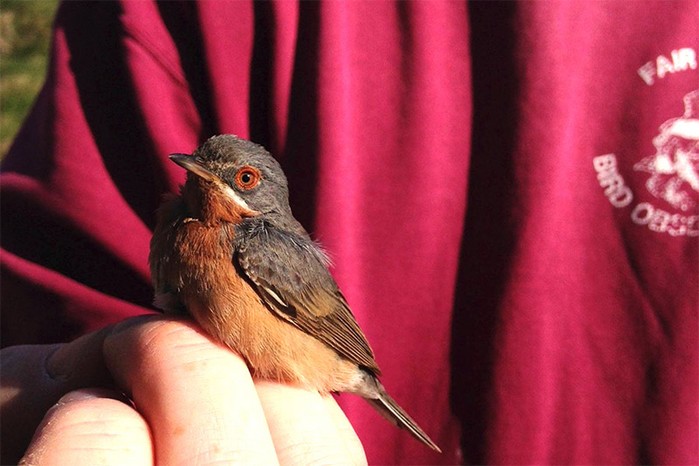
Adding to the throng (and my headache) were three further male Subalpines on 9th, two in the far southwest of England - one on St. Agnes (Scilly), the other in Kynance Cove on the Cornish mainland; the latter looking to the crush my prediction for next week by being a hot-tip for a Moltoni’s, with the third, a male Eastern appearing on Bardsey Island (Gwynedd) and then the same Cornish cover at Kynance produced a female Subalpine sp., the following day.
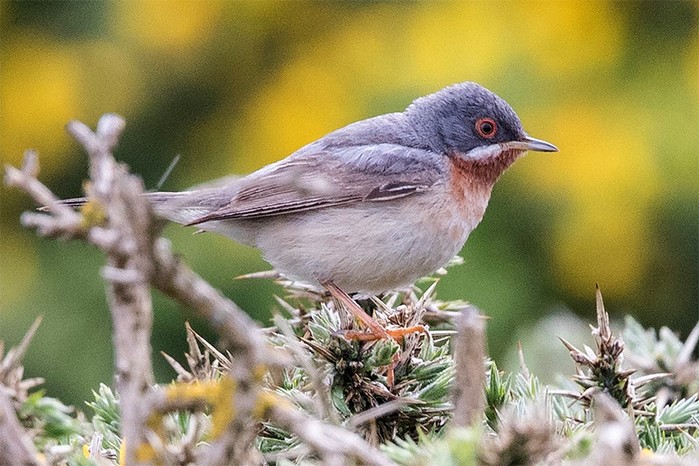
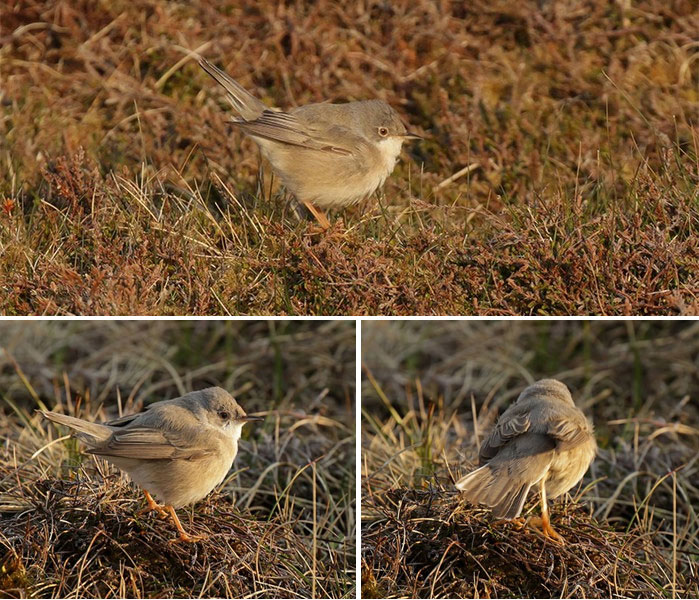
More were to follow on 10th as Fair Isle landed a new male Eastern Subalpine Warbler along with a (potentially new?) female Western and an unspecified second female!
A stunning week then for all things Subalpine - all heading right over the east coast courtesy of the big blue skies here - and here’s what we had in full…
- One presumed, (non-calling) male Moltoni’s Warbler.
- Four Eastern Subalpine Warblers, three males and a female.
- Three + Western Subalpine Warblers, two males and at least female.
- Four Subalpine Warbler sp.,, one male and three females.
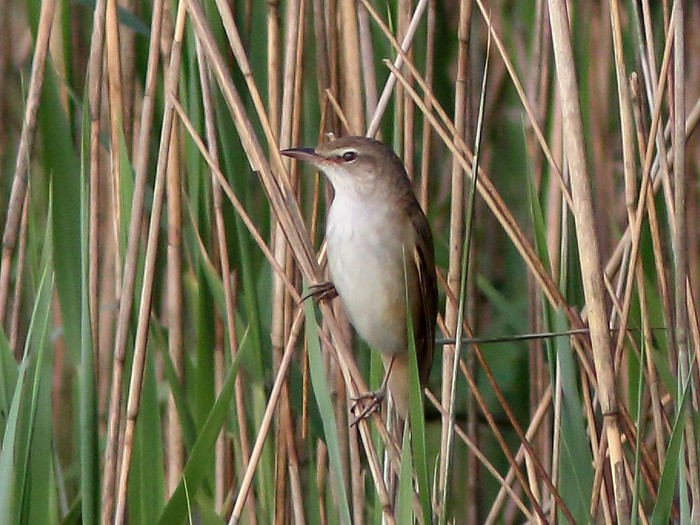
In the east Midlands, two singing male Great Reed Warblers were found on 9th - in Nottinghamshire, at Netherfield Lagoons and in Derbyshire, at Willington GPs. The last bird in Notts., was also at Netherfield, in June 1997 (that was just the 2nd county record) while Derbyshire has just one previous record, at Straw’s Bridge in 2010. In a manic week, the third Great Reed was found near Lower Moors, St. Mary’s (Scilly) - the 9th for the islands and the first since 2011.
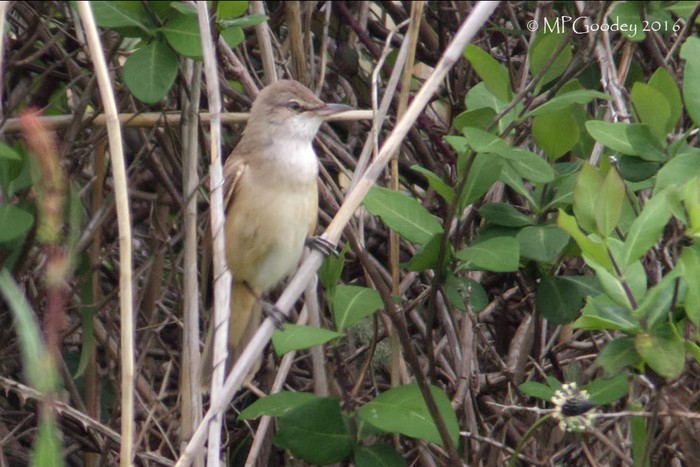
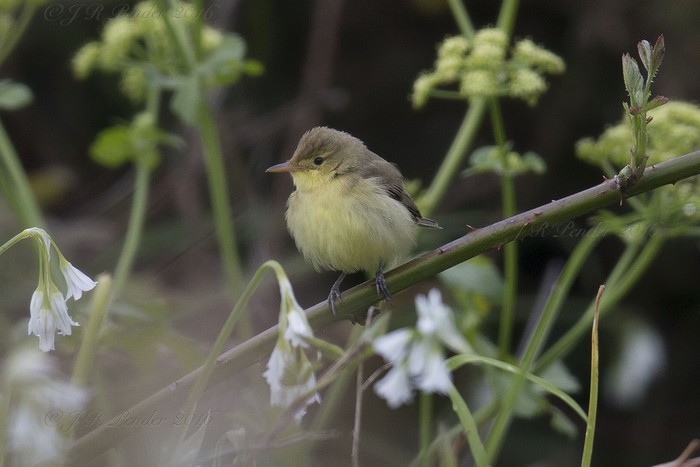
New for the year, in an increasingly frought and frantic finale to the week was the Melodious Warbler on Scilly, along the Garrison on St. Mary’s on 9th (and a Hippolais sp., was at Kilnsea on 10th) while the elusive singing male Savi’s Warbler at Minsmere RSPB sang from 4th-6th (and even showed at dawn on 5th). An earlyish Marsh Warbler was mentioned from Hampshire on a sunny 6th, seen and photographed near Gosport.
The first few weeks of spring ’16 has already yielded a total of five Woodchat Shrikes - and that was before this warm pulse of Med-friendly migrant weather set itself up over the country during the early part of this week’s review period. Almost instantly, birds began to arrive and amongst them were a further (impressive) 11 or 12 Woodchats.
First up came one found well inland near Shirland (Derbyshire) on the morning of the 4th - the first for the East Midlands county since very early May 2006 - and this was followed later the same day by one around the farm on Skomer Island (Pembrokeshire) - the species has been annual in the west Wales county since 2011 and this one remained to 8th.
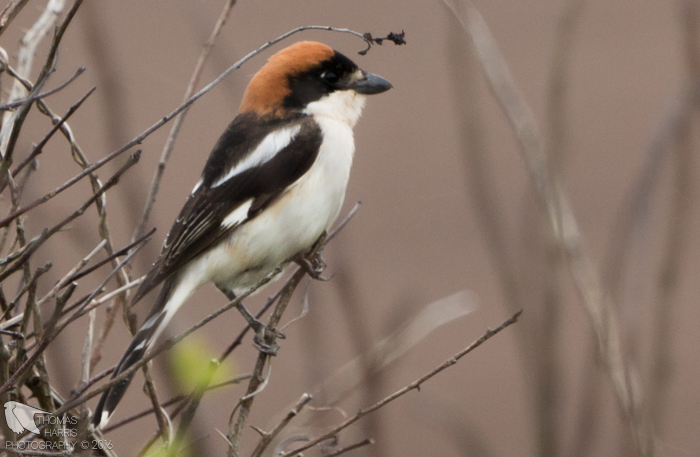
The week’s third Woodchat Shrike was found along the south Devon coast, at Wembury in the early morning of 5th and it was followed, in quick succession, by two birds on Scilly, one on Bryher (by the campsite) and one on St. Mary’s (on the golf course) - becoming the third and fourth for Scilly this spring and the second records for both islands this year too.
Bird #6 for the week, a 1st-summer male, was found at Marazion Marsh RSPB (Cornwall) on 7th while birds 7 to 10 followed on 8th; new on Anglesey was one at Cemlyn Bay NWWT, while Ireland’s first of the year, a male, was found at Brownstown Head (Co. Waterford) and what was likely a new bird, another male, was on Bryher as well (Scilly’s fifth and Bryher’s third of the year so far). The last of the Sunday quartet was on the Lizard (Cornwall) with what could have been a new bird on the same peninsula the following day. The week concluded with a furtehrCornish bird, this one seen near the chucrh at St. Levan on 10th.
Given the warmth around the place, the lack of Bee-eaters was something of a surprise, only four counties registering any this week. The first was over Kilnsea (East Yorkshire) on 7th and, four hours later, it was over Hemsby (Norfolk). The week’s other records came along on 8th, seen over Bournemouth (Dorset), on 9th over Dungeness (Kent) and on 10th at Spurn (East Yorkshire) with two more in Dorset, at Weston, on Portland.
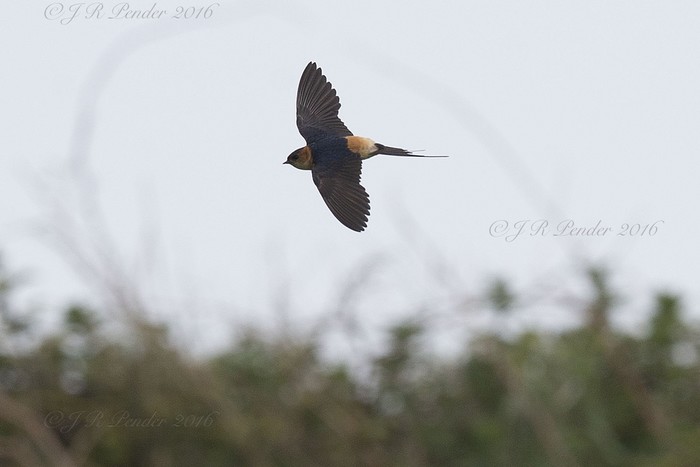
The week began with the first of several Red-rumped Swallows being seen at Portland Bill (Dorset) on 4th and it was followed by birds at either end of the country. Fair Isle’s 10th-ever (and the first since 2012) was located on 5th with another found at Content, St. Mary’s (Scilly) later the same day with two birds around the island as 5th drew to a close.
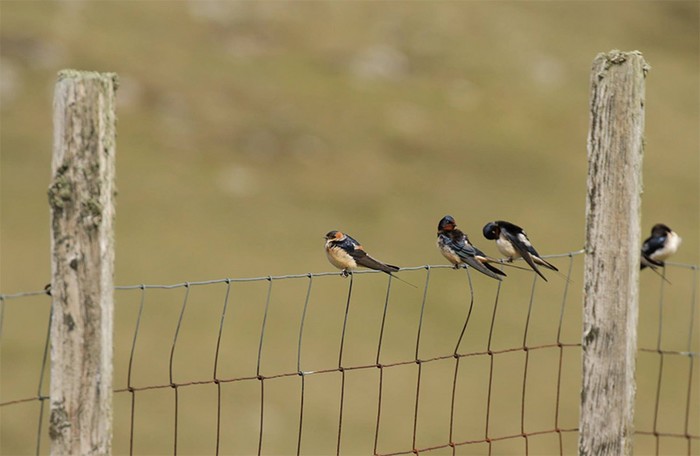
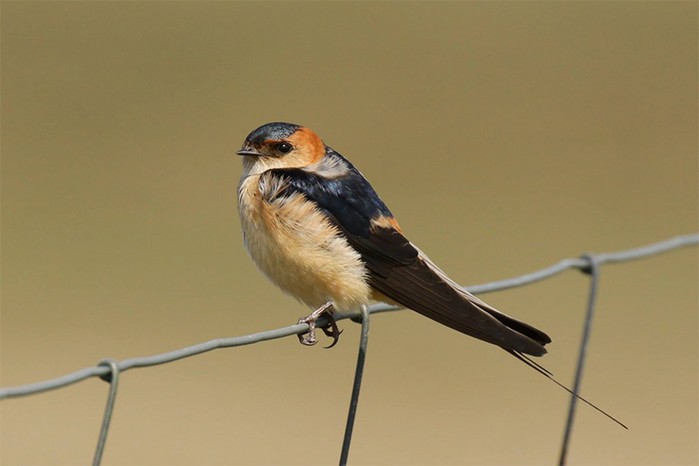
The Fair Isle bird remained to 6th when one was noted at Pegwell Bay (Kent) while one remained around Porth Hellick on St. Mary’s through until 7th. The next day on Scilly saw singles at three different sites on the east side of the island before three more flew east over Pelistry (with two by the airfield later that night). Also on 8th came a bird on the Cornish mainland, at Lizard village, with a Kent record too, seen at Capel-le-Ferne (A bird that was still in place on 10th) while at least three ‘rumpers remained around St. Mary’s on 9th.
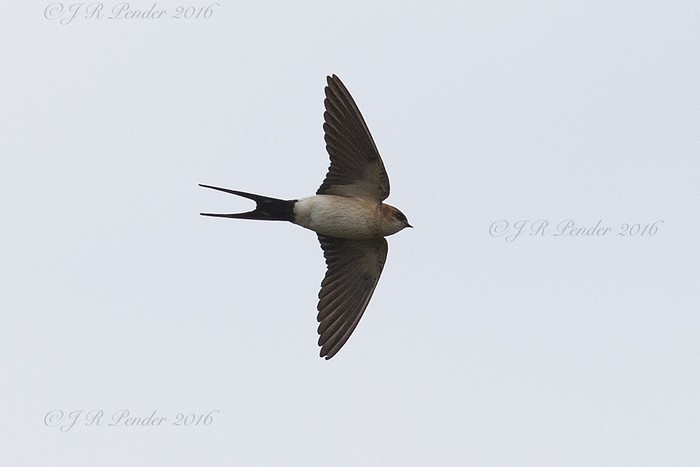
This week saw two Alpine Swifts reported; the first was reported from Kingsdown (Kent) on 4th and the second was seen at Pope’s Hill (Gloucestershire) on 8th.
Golden Orioles have finally found a way over the English Channel and up to 19 were reported through the week. The first for the year was heard-only singing male at Grafham Water (Leicestershire) on 4th with two the same day at Croft Pascoe (Cornwall). Another Cornish bird followed on 5th, at Morvah, and the first two of five Scilly birds appeared on St. Mary’s the same day. Others around the islands were on Tresco on 6th-7th, Bryher on 7th and back on St. Mary’s on 8th while 9th yielded as many as five or six around the islands, including twos on Mary’s and Agy - with a further six noted around Scilly on 10th too.
The rest of the week’s birds were well spread out - one was at Marloes Mere (Pembrokeshire) on 6th-7th, with another on 6th reported in the gardens of St. Abbs Head (Borders) - the species is desperately rare here, just two others reports in the past decade - with birds on 8th at Hesketh (Lancashire), Bockhill Farm (Kent) and singing at Little Wittenham (Oxfordshire).
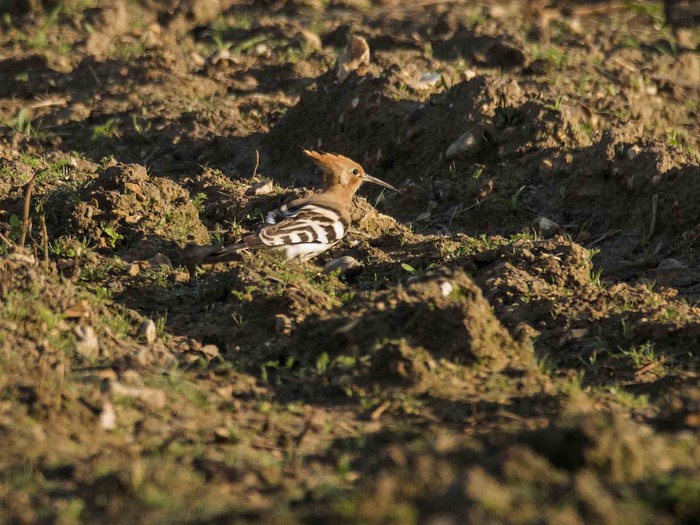
The summery blast of warm spring sunshine and Mediterranean weather flopped around 13 Hoopoes our way, five of them seen on 4th. In East Yorkshire, last week’s bird remained at Flamborough through to 6th and new were singles near Gloucester, Clayton (Staffordshire), Dunwich (Suffolk) and Onchan (Isle of Man) while 5th saw three more found; at Ashford (Kent), Tring (Hertfordshire) and Tugnet (Moray) - the first there since 2007. Cornwall scored two on 6th and 7th, at Porthleven and on the Lizard while 8th saw ones a piece for Northumberland (at Haltwhistle), Norfolk (briefly at Sculthorpe Moor NR) and Wexford (seen near Lady’s Island Lake) .
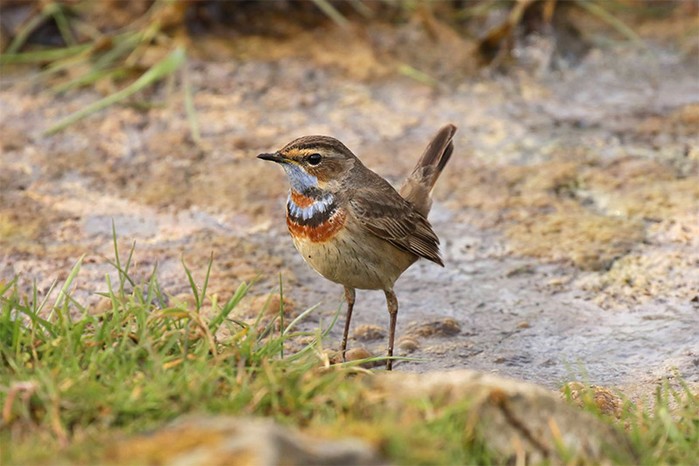
The start of the second week in May is often dotted with some delightful Red-spotted Bluethroats - and upwards of 10+ kicked things off this week. A female on Fair Isle on 7th was followed by a post-lunch male near the Observatory on 8th (where the day total ended on three in all) while a fine male showed well in scrub at Filey (North Yorkshire) the same day. Next day, a female was found on Noss, one was at Pool of Virkie (Shetland) and the Filey bird was reported again too while 10th saw males arrive on North Ronaldsay (Orkney) and the Isle of May as Fair Isle logged at least four.
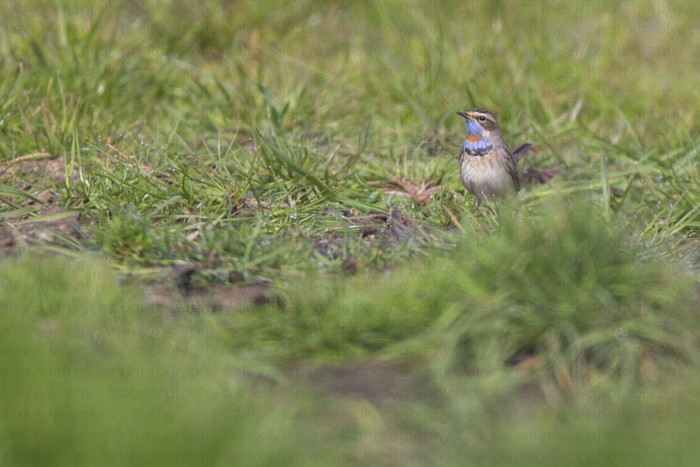
Those lucky enough to be on the latter island off Fife’s coast were having a cracking day on 10th, three good birds already mentioned and a fourth came along in the shape of the first Red-breasted Flycatcher of the year. Quite some day - especially given the lack of action elsewhere.
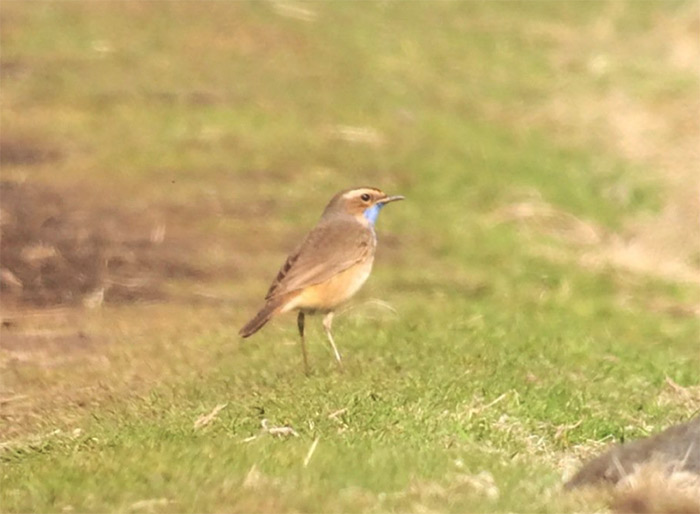
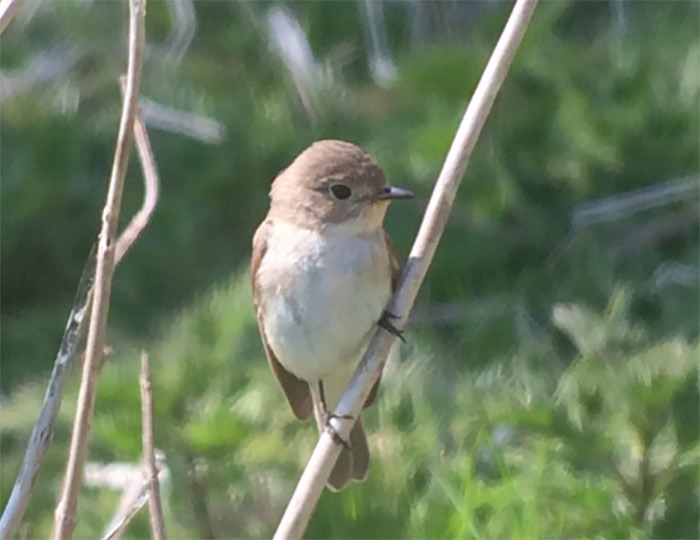
Another typical May species is Red-backed Shrike and another “1st for ‘16” fell this week thanks to the males that made landfall between Torness and Thortonloch (Lothian) and on Cork’s Mizen Head, both found on 8th. A third male was located the next day at Sands of Forvie NNR (Aberdeenshire) with a fourth making it to Geosetter, Mainland (Shetland), also on 9th. The fifth of the week, and the first female, was found on Isle of May on 10th and Fair Isle popped in a male on the same date with the final one of the week making itself known at Strumpshaw Fen RSPB (Norfolk).
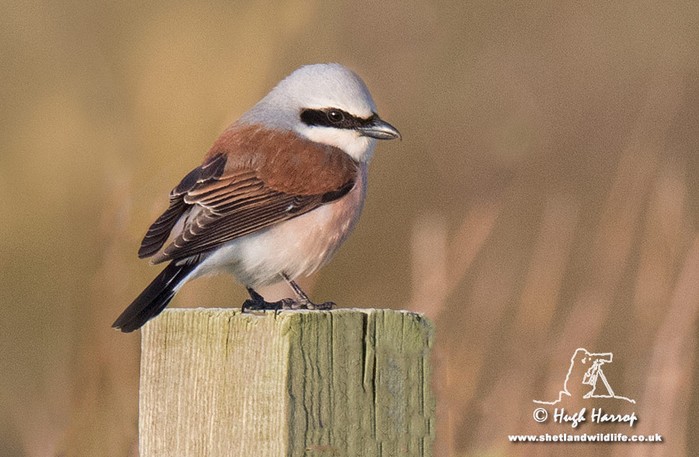
Shetland also hosted the first of the week’s Common Rosefinches, one seen on Foula on 7th, the other coming to Calf of Man on 10th while an Ortolan Bunting appeared in North Yorkshire, at Long Nab, Burniston in the less-than-stellar east coast fall of 10th.
It really is so good to see Bluethroats, Red-backed Shrikes, Rosefinches and Ortolans back on the pager…
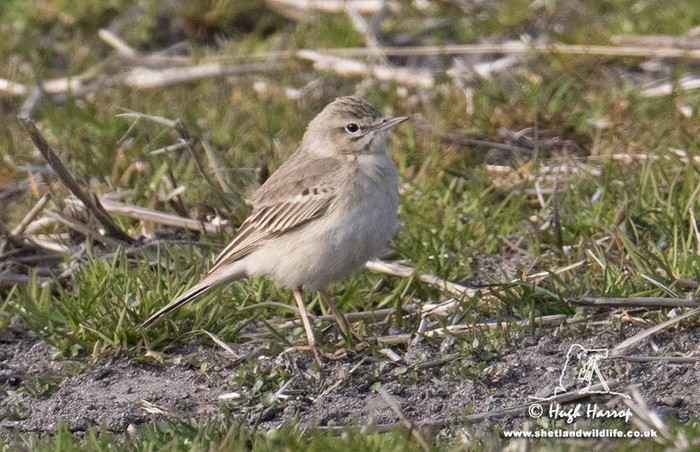
Another 2016 debuatant recorded this week (and no surprise given the lovely overshoot conditions) was Tawny Pipit, one found at the Sumburgh Hotel, Mainland (Shetland) on 8th.
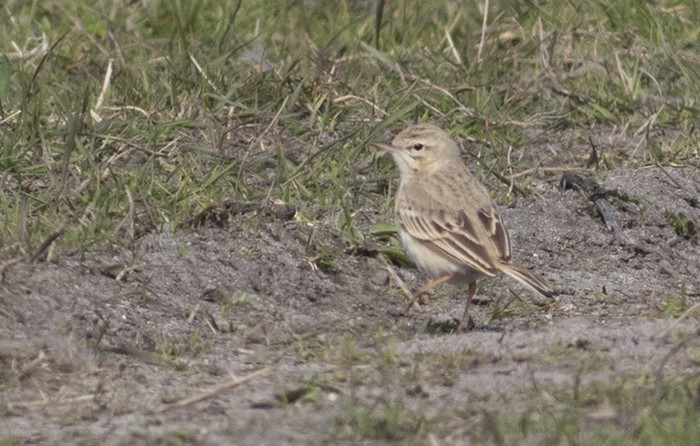
Shetland also hosted two of the week’s six Short-toed Larks, one remained on Fair Isle to 8th and another appeared on the Mainland, at Hillwell, also on 8th. On the Norfolk coast, one was seen for short time on the morning of 7th, on the seawall at Burnham Overy and the second of the day was a belated report from the Calf of Man. The fifth of the week was on Scilly, around the airfield on St. Mary’s on 8th and the sixth was on Knockadoon Head (Co. Cork) on 9th.
Serins had a fair showing this week too - 12 in all with three of those in Norfolk, two of them on 4th; heading over the cliffs at Hunstanton and feeding on the slopes of Weybourne Camp. The third appeared in the dunes at Burnham Overy on 7th. Two singles were seen at Spurn during the week, on 4th and 6th, and two were seen over Frampton Marsh RSPB (Lincolnshire) on 5th when one flew over Landguard NR (Suffolk). The others for the week were a two-day bird around Selsey Bill (West Sussex) from 6th, heading over London’s Cross Ness LNR on 8th and Land’s End on 9th-10th.
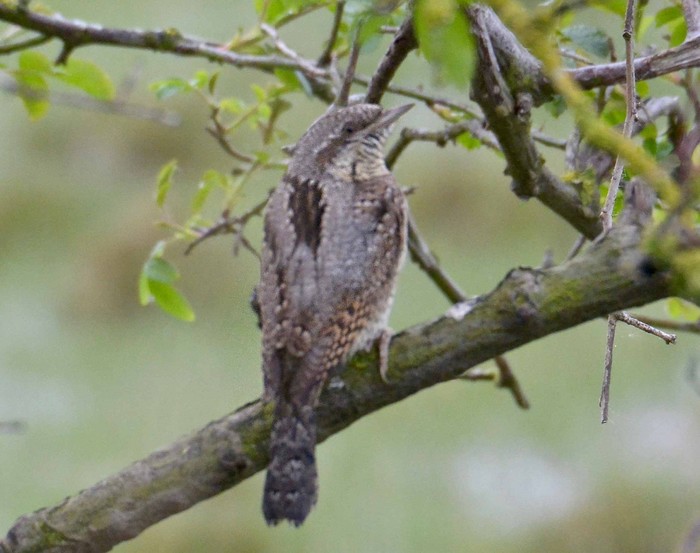
One species that wasn’t too obvious this week was Wryneck, after 11 seven days ago, just five were noted; at Winterton (Norfolk) and Rowberrow (Somerset) on 4th and 6th respectively with ones on Fair Isle (Shetland), the Isle of May (Fife) and at Frampton Marsh RSPB (Lincolnshire) all on 9th with perhaps a new one on Fair Isle on 10th.
In to the home straight now…and to conclude the epic proceedings, a single Richard’s Pipit that flew over the Garrison, St. Mary’s (Scilly) on 5th with another on Orkney, at Stromness on 9th.
It look as though the warm weather that’s bathed much of the country will change a little in forthcoming days, the temperature falls away to the mid-teens and the winds become all the more variable - a breath of northeast seems to be on the cards but after that the guessing games begin.
As you’d expect, the further you get in to May, the better the rare birds become - quality rising almost day-by-day while some of our more frequent, though always welcome, overshoots really begin to show their hand.
With Nearctic rares very much in the mind at the moment, it may be worth mentioning the sheer variety of previous North American offerings that have made it here (hook or by at-sea crook) historically through the dates of May 11th-17th.
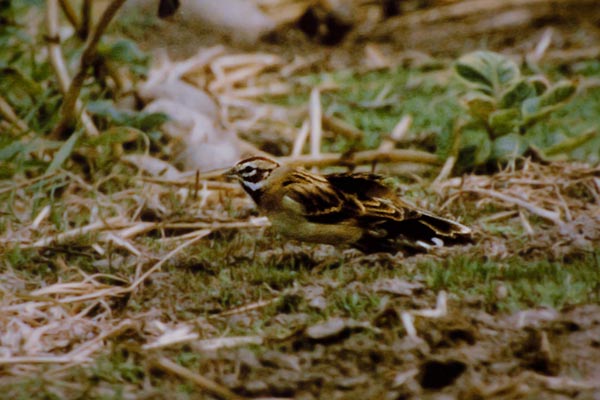
Along with four species of sparrow, White-throated - six of those; White-crowned - two of them and single Song and Lark (the Waxham bird of 1991) there have been a further seven species of Nearctic vagrants recorded in the days ahead ranging from Cornwall’s Baltimore Oriole of 1968 to the Essex Northern Mockingbird of 1988.
Add in Slate-coloured Junco, Common Yellowthroat and Veery (on Shetland and Lundy within days of each other in May 1997) and the Fair Isle Hermit Thrush on 2013 - well, it really is an impressive role call of honour.
Hermit Thrush image here, from review of May 7-13 2014, whichever you want to includeWhile the American options can never be discounted at this time of year, chances are though that our major rares will come from the south or east of Europe across the next seven days.
There’s a huge long list of big rares and a couple to keep at the back of the mind are Marmora’s Warbler (the first for Britain was found in South Yorkshire in May 1982 and the Norfolk male was found in May 2001).
Mid-May favourites abound too of course, it isn’t always about those megas, and with favourable conditions, we must be on for a Thrush Nightingale and more Citrine Wagtails must be on the cards any day too (yep, they scuppered me by a day as well).
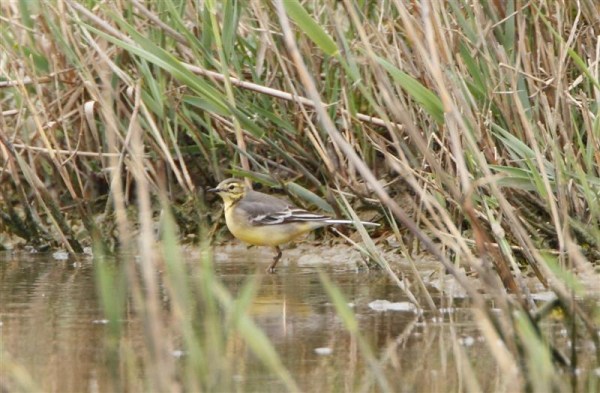
Collared Flycatcher gets another mention - there’s been five of them in the seven days ahead - and a whopping 27 Rustic Buntings offers a sizeable clue as to where the mind is heading now…
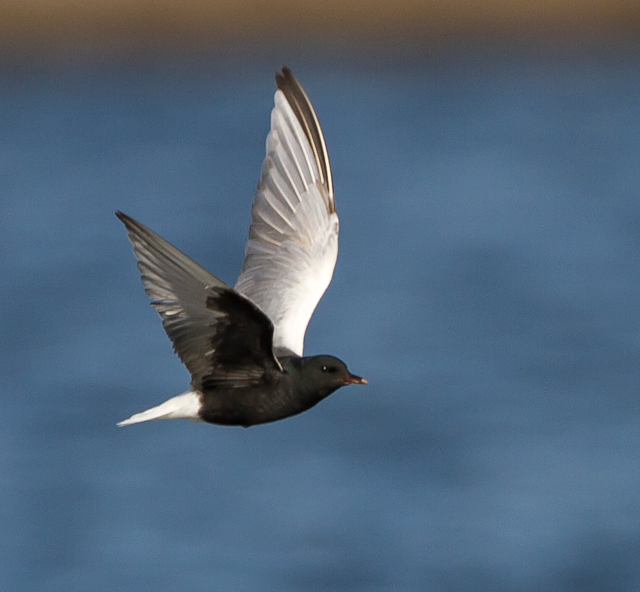
...May 8th managed to blitz both of my shoe-in predictions for this week - Broad-billed Sandpiper and White-winged Black Tern - but it is still worth mentioning that, should you not have found the former in Merseyside and the latter in Durham then still chance your arm at trying your best for either species on Lucky Thirteen; there’ve been 13 of the former and 10 of the latter recorded on that date alone.
Also, let’s not forget that May 11th last year dropped at least one Moltoni’s Warbler on to the north Norfolk coast - so everyone will be in the zone for that delicate little beauty…
…and that perky “new” Sylvia and Junco are there or thereabouts (as the weather changes…) and, being where we are in the calendar, options abound.
Your one, two, three selections are...
- #1 - Rustic Bunting
- #2 - Collared Flycatcher
- #3 - Creztschmar’s Bunting
And if a Bunting sandwich isn’t your thing, then stake a little wildcard money on Bimaculated Lark - and given the forecast (ahead of the change) lump it on Shetland, and Fair Isle as the place that’ll land next week’s biggie.
See where we go with those shall we?
Mark Golley
11 May 2016
Please note: we put a lot of time and effort into sourcing and and producing the images, videos and graphics for each roundup. Some of you (probably Apple users) may notice some photos etc. that appear to have incorrect captions. Please try refreshing the page as they are correcty captioned. If after a refresh they are still showing the incorrect captions then please email us
Contributors websites















